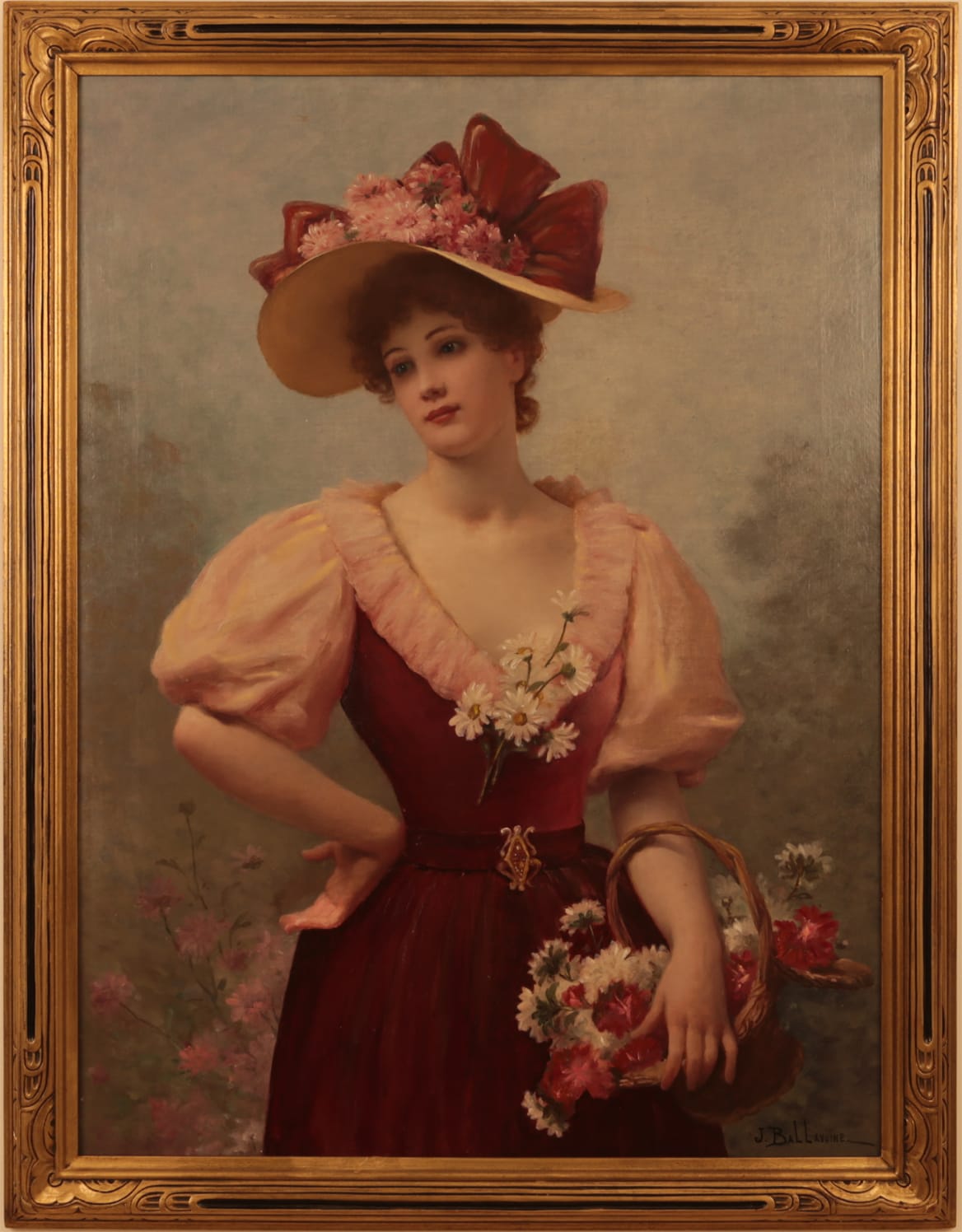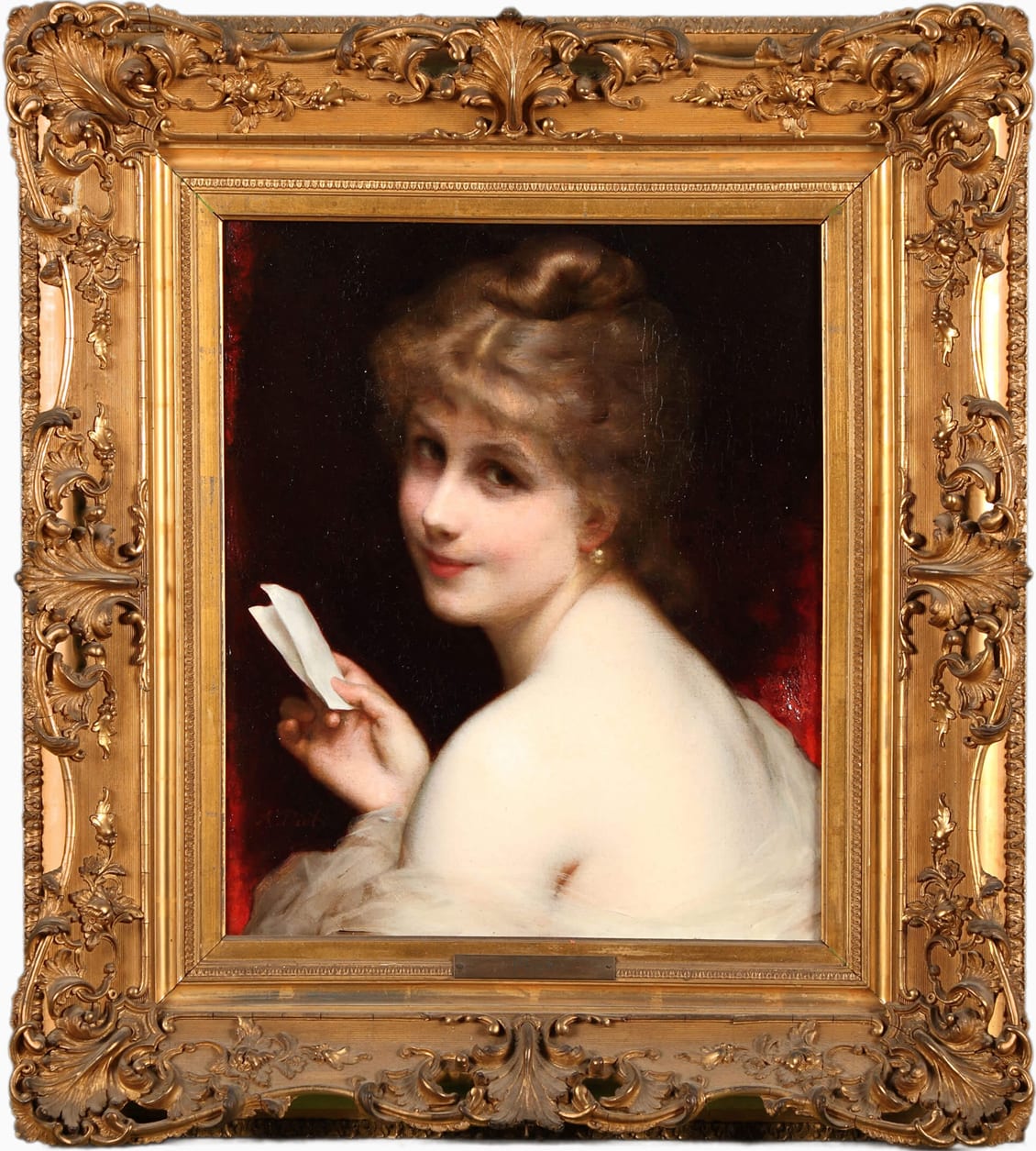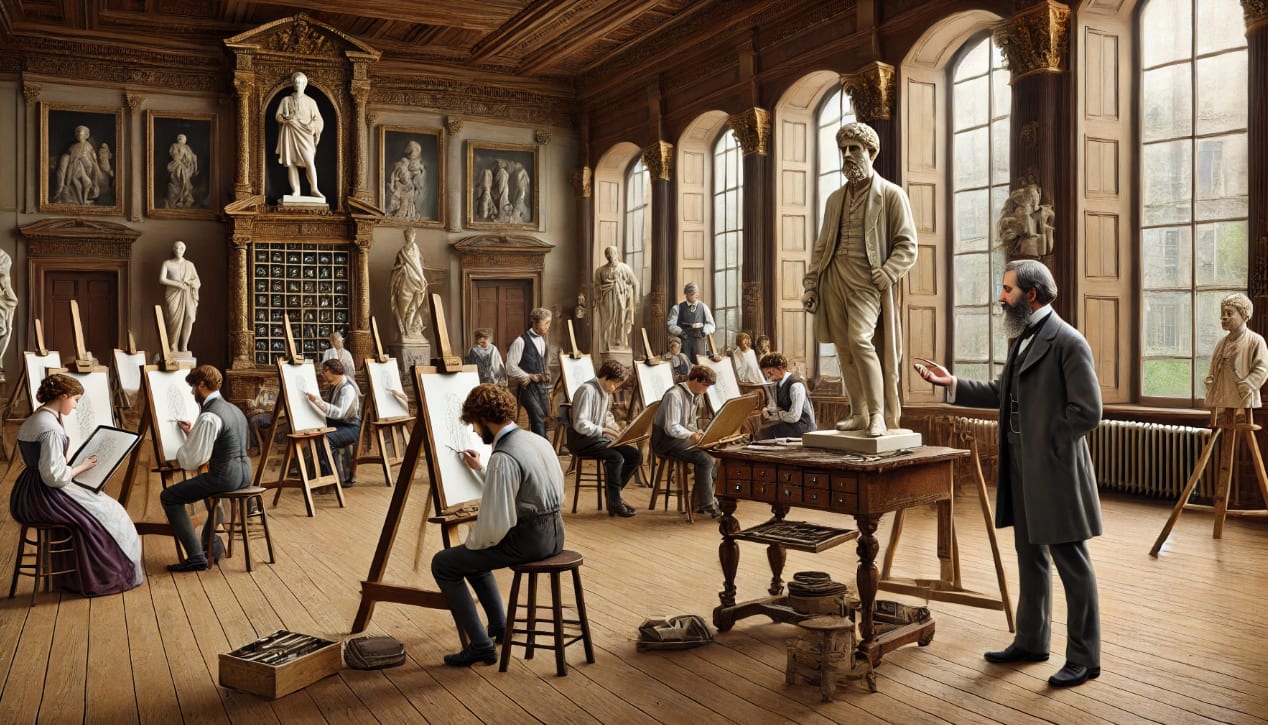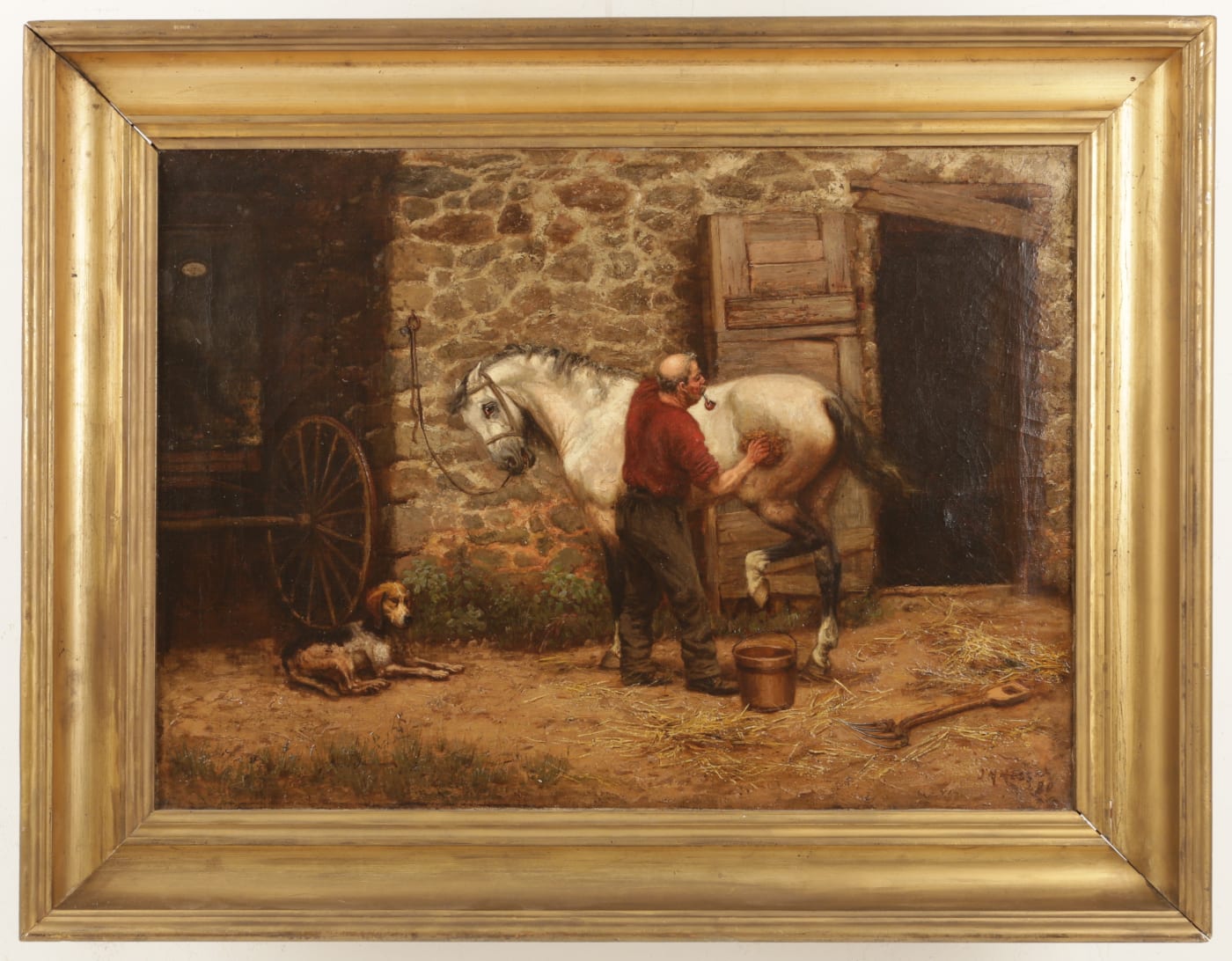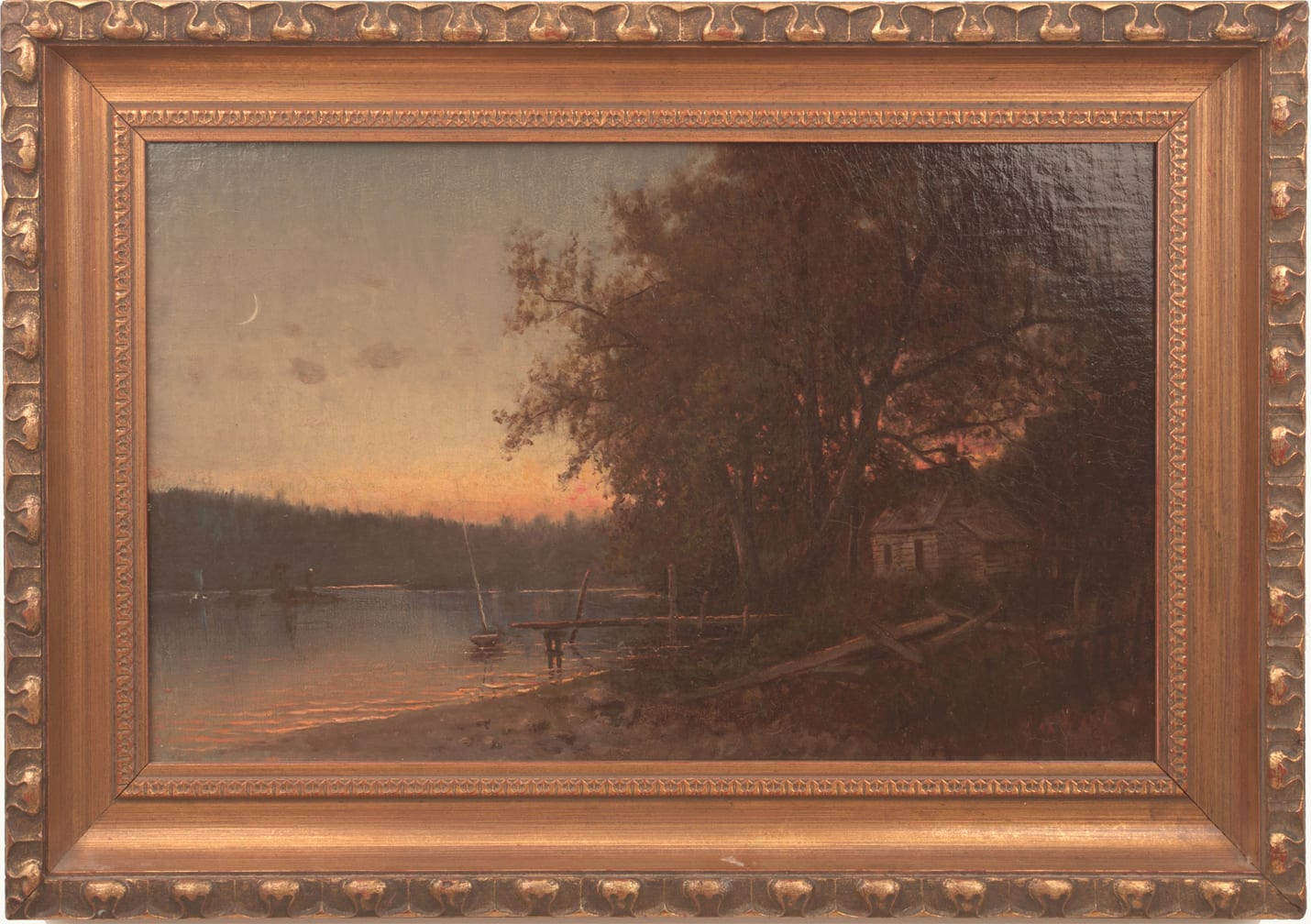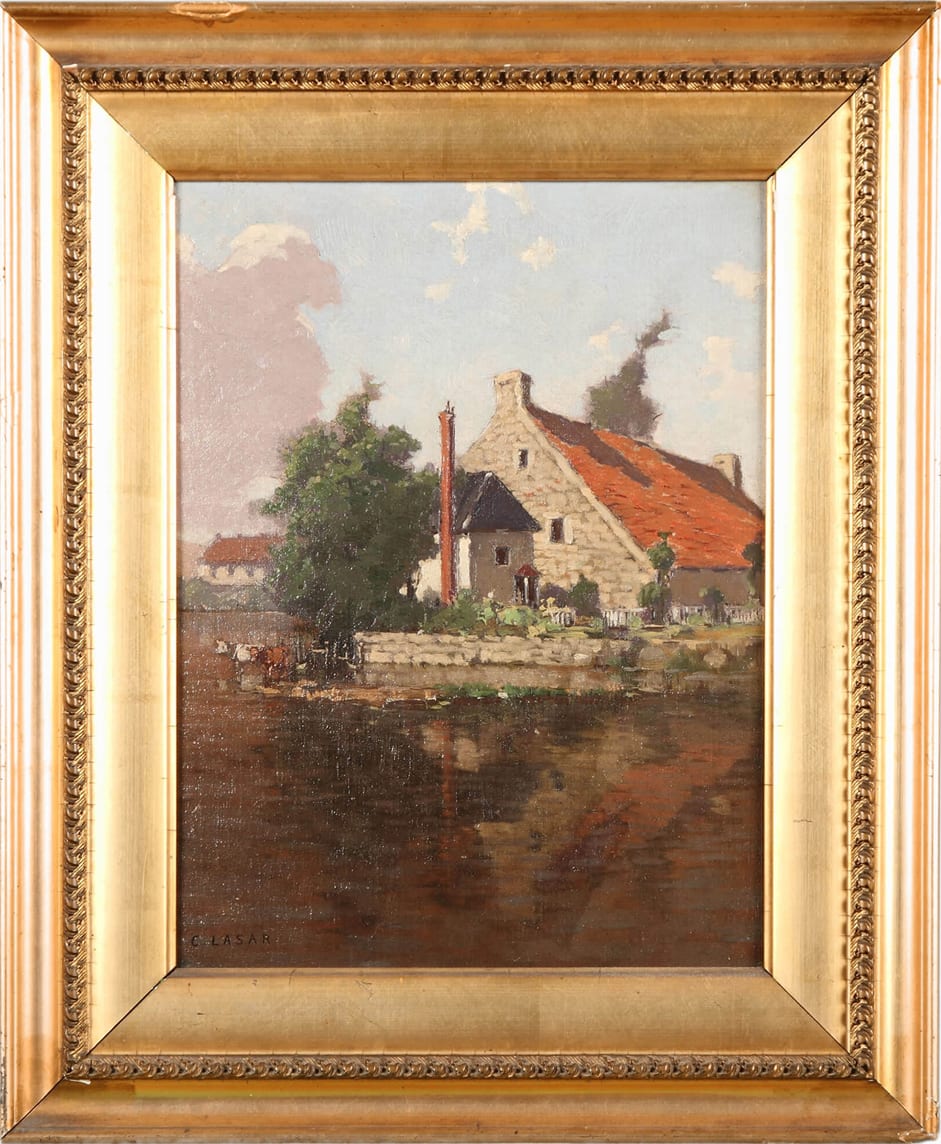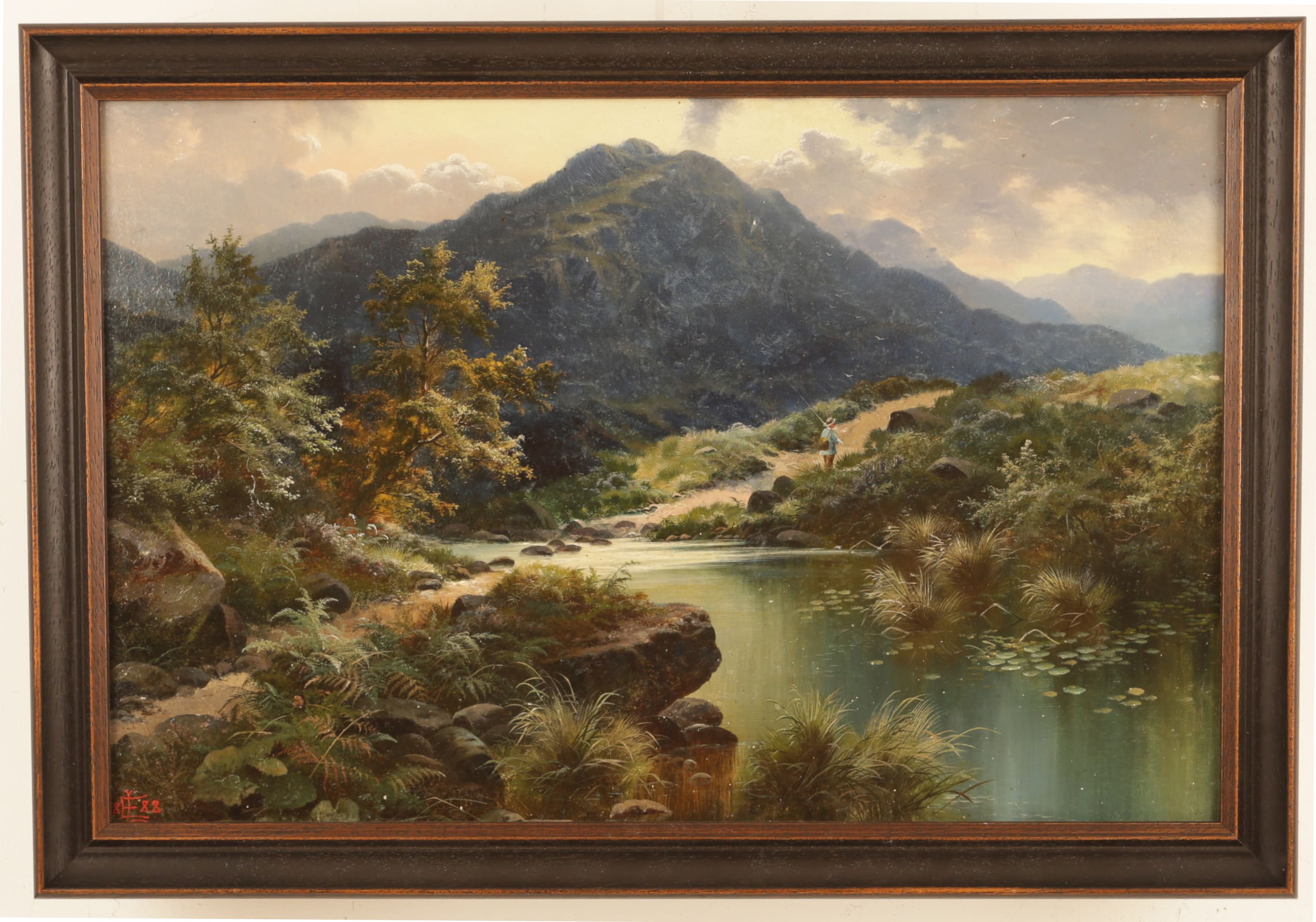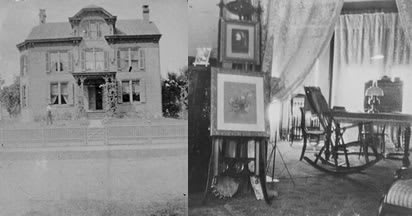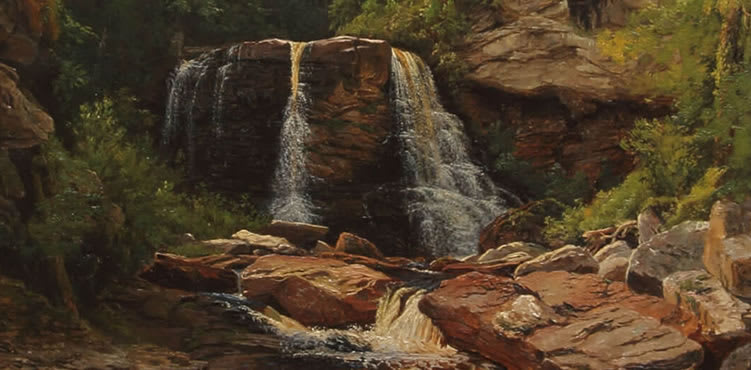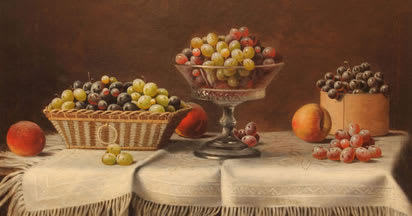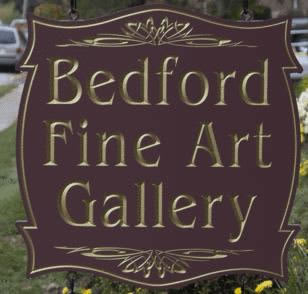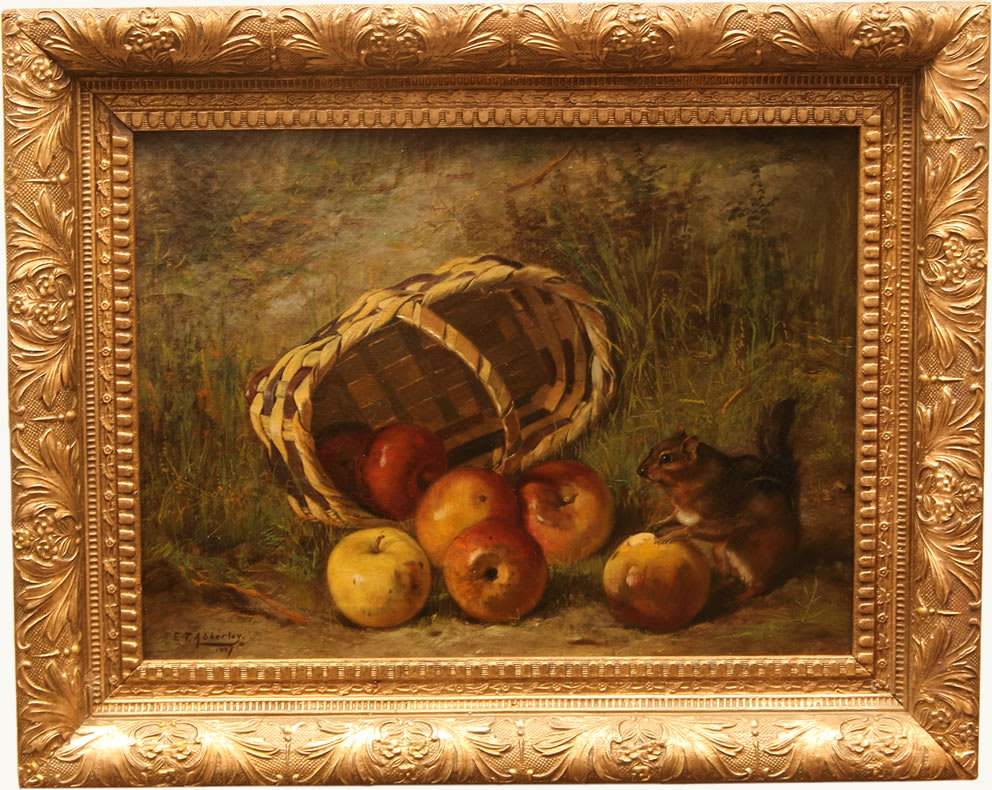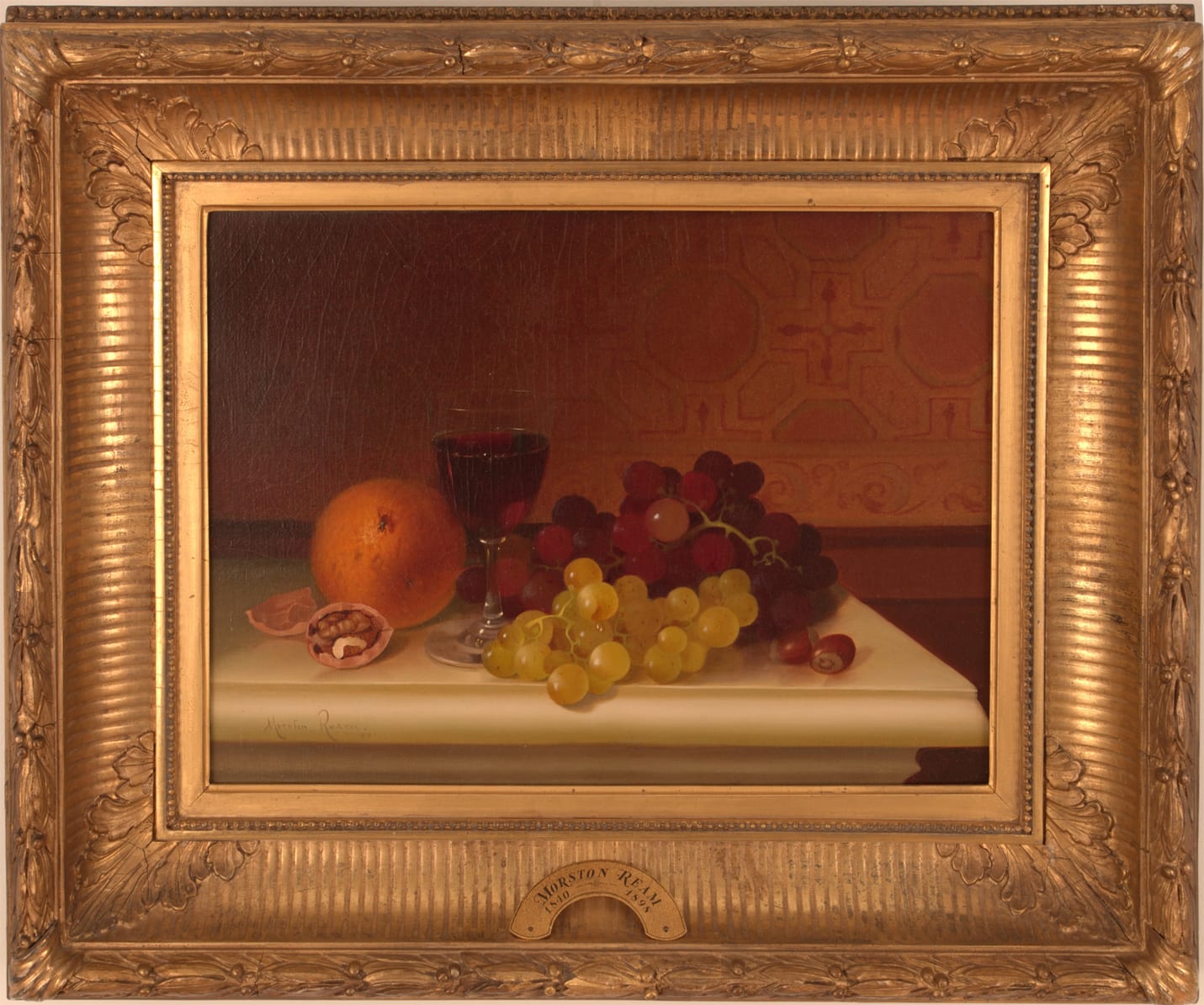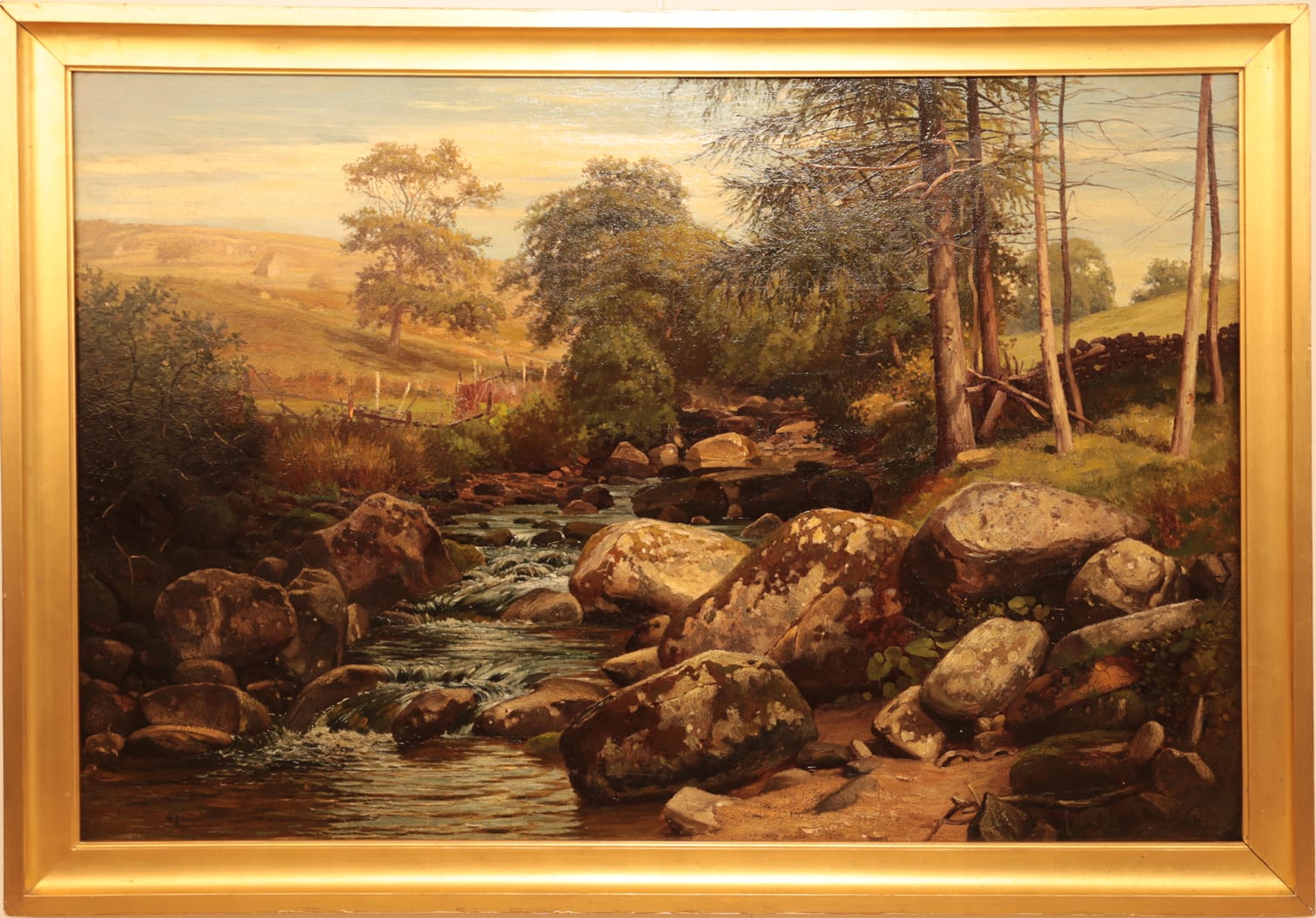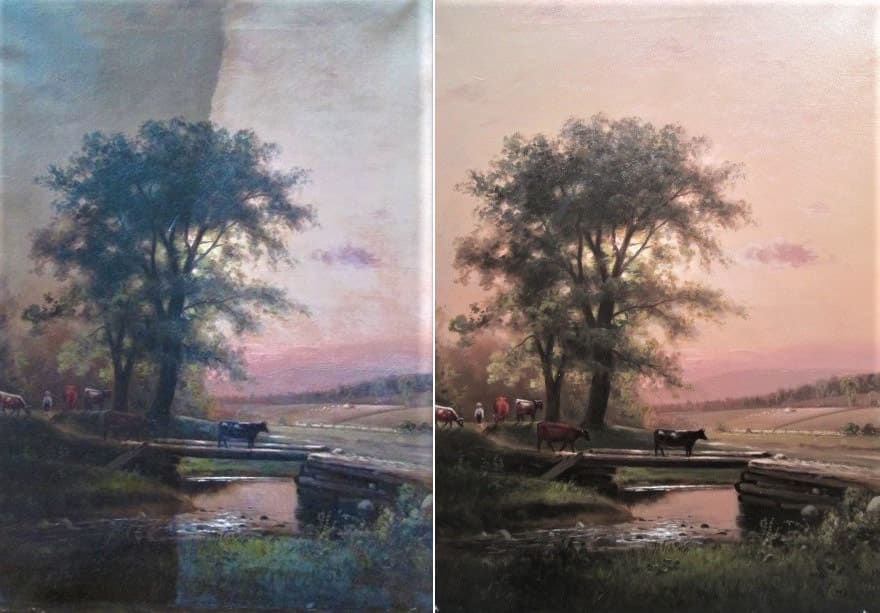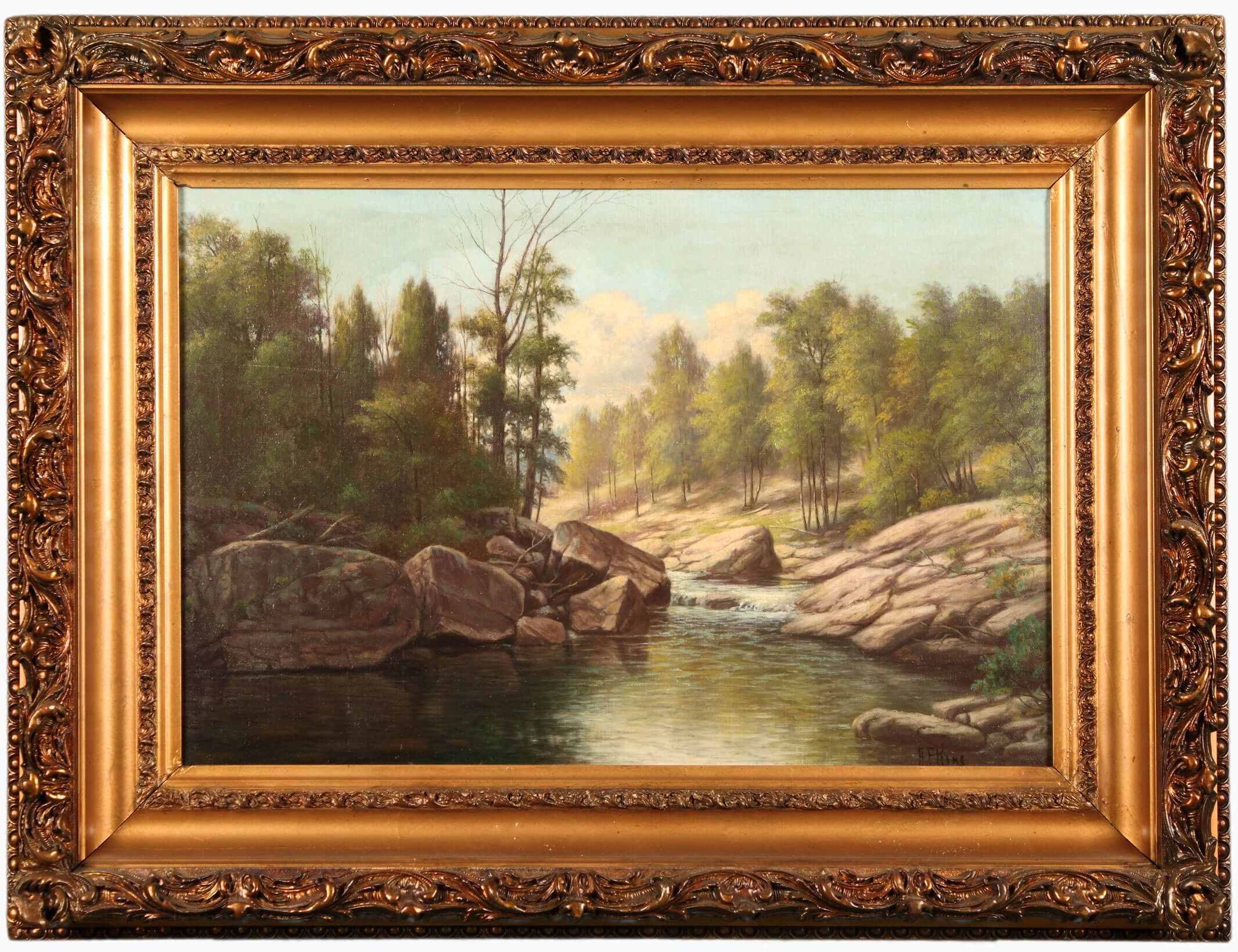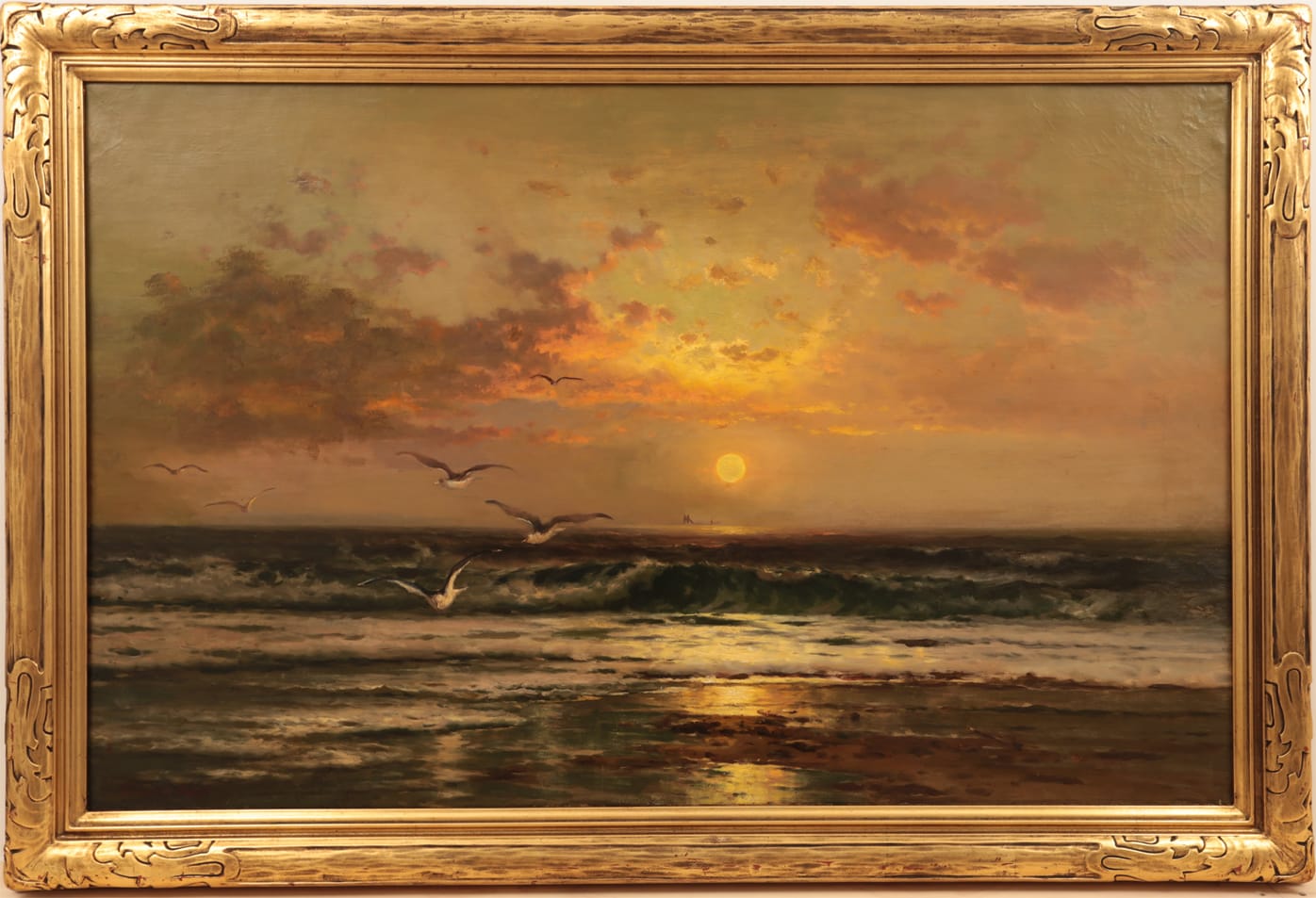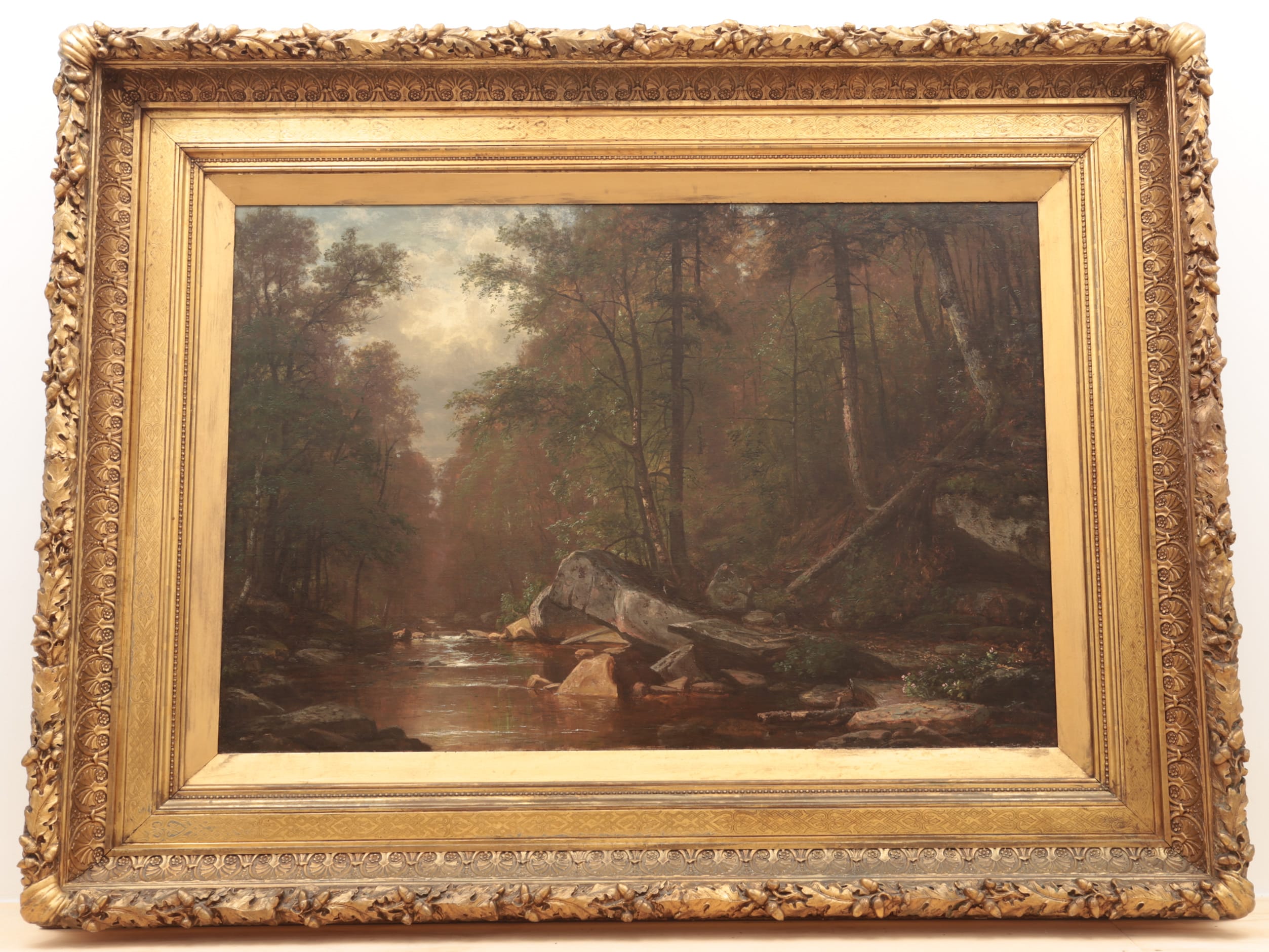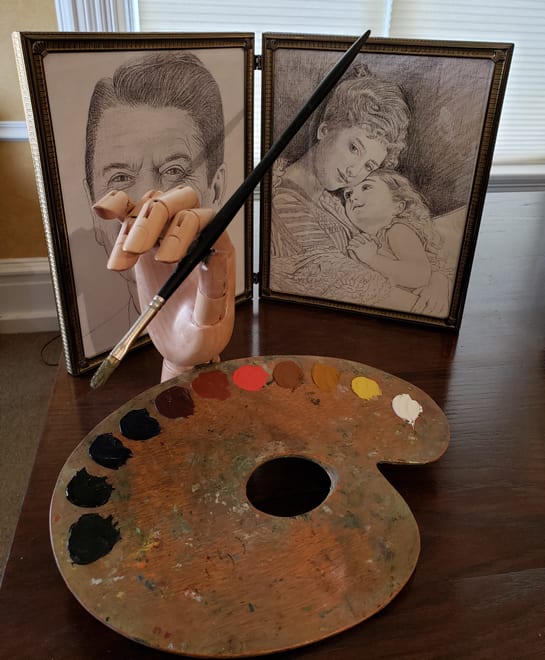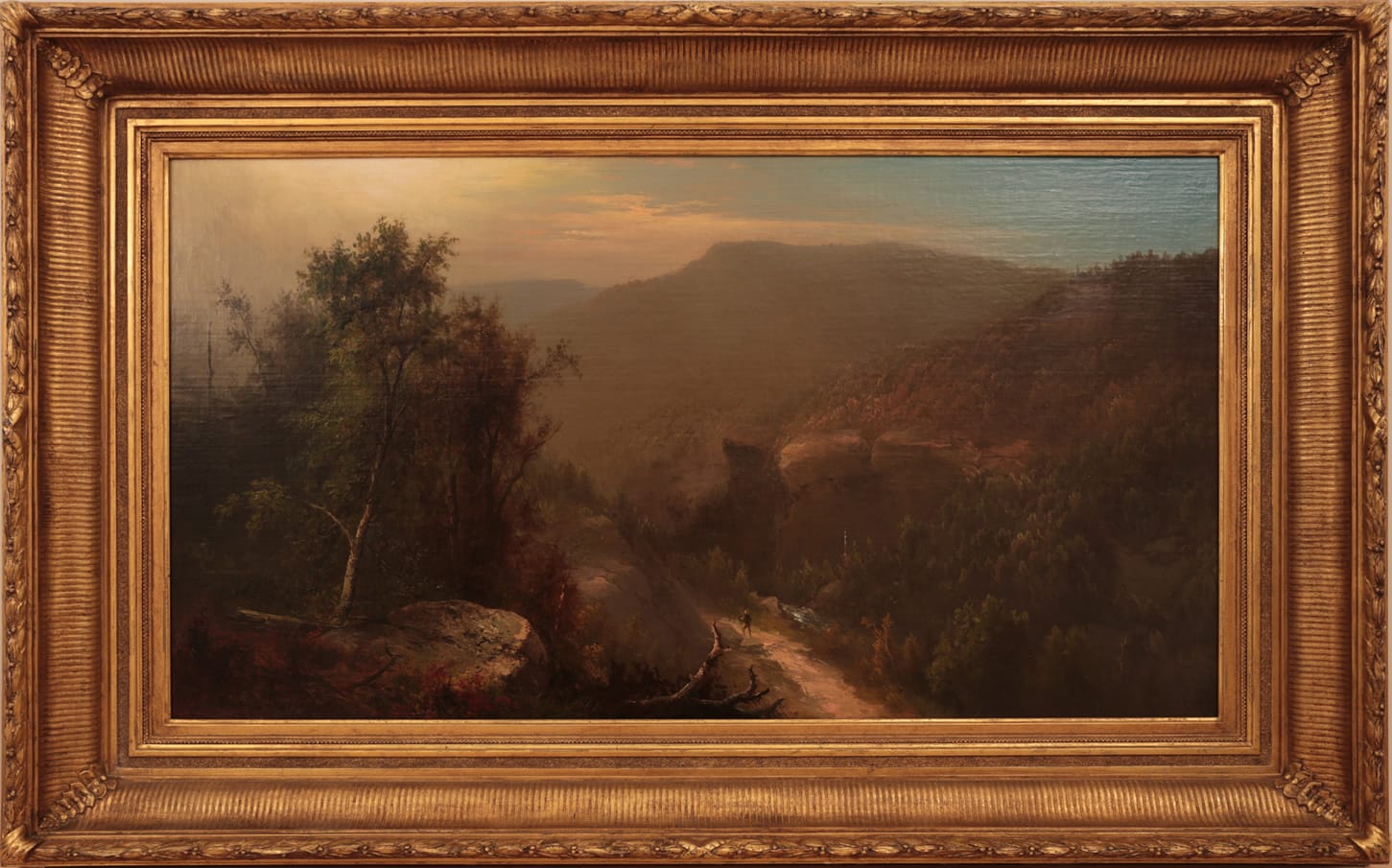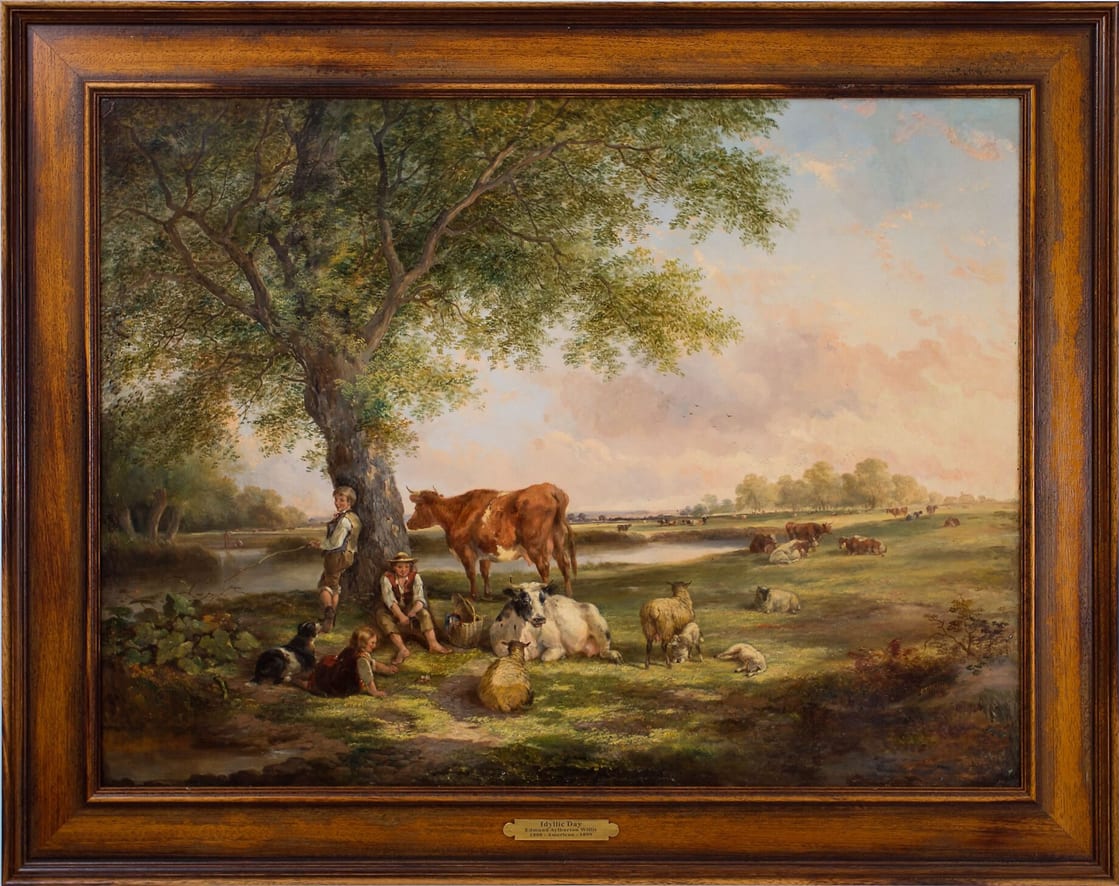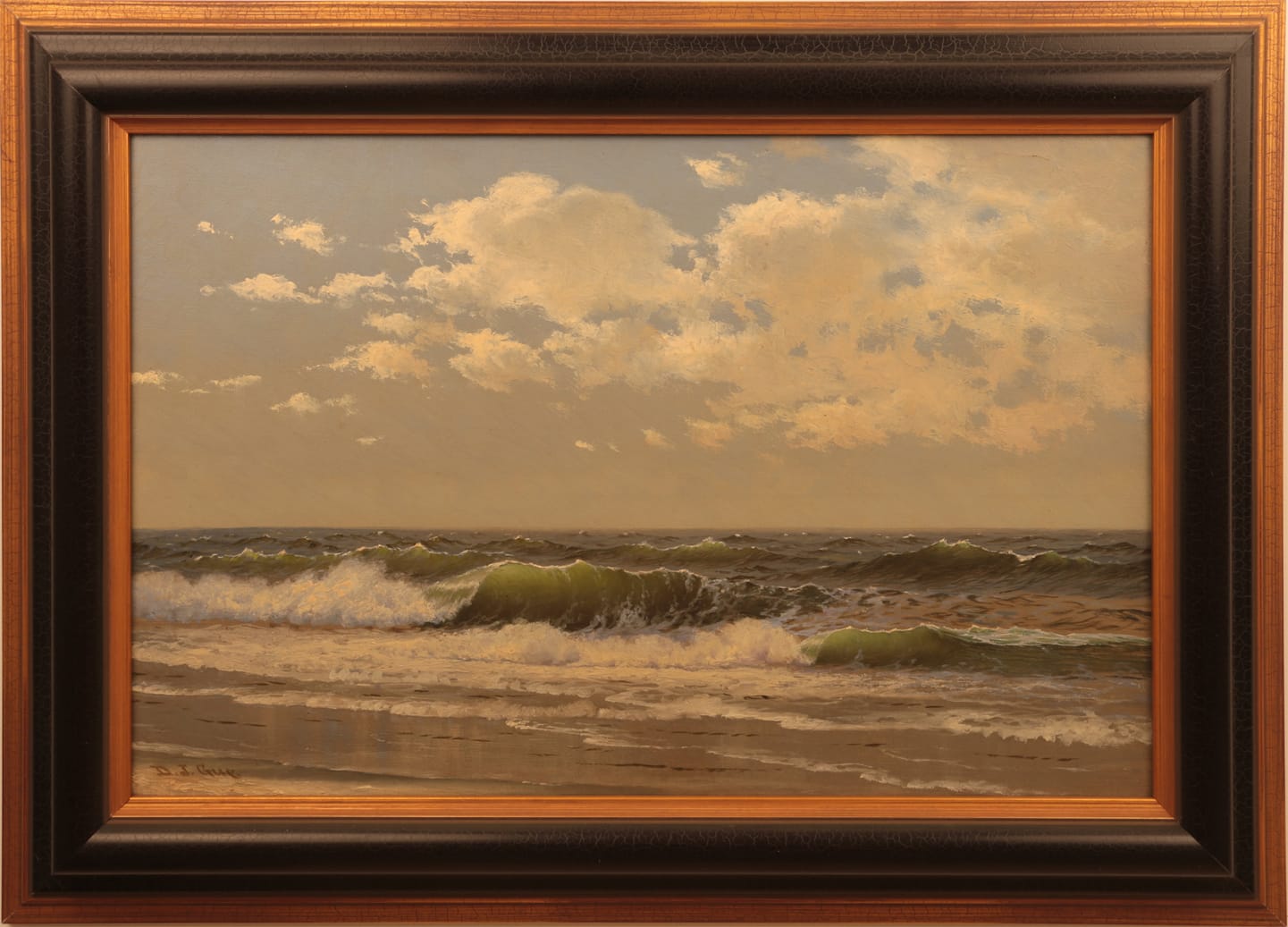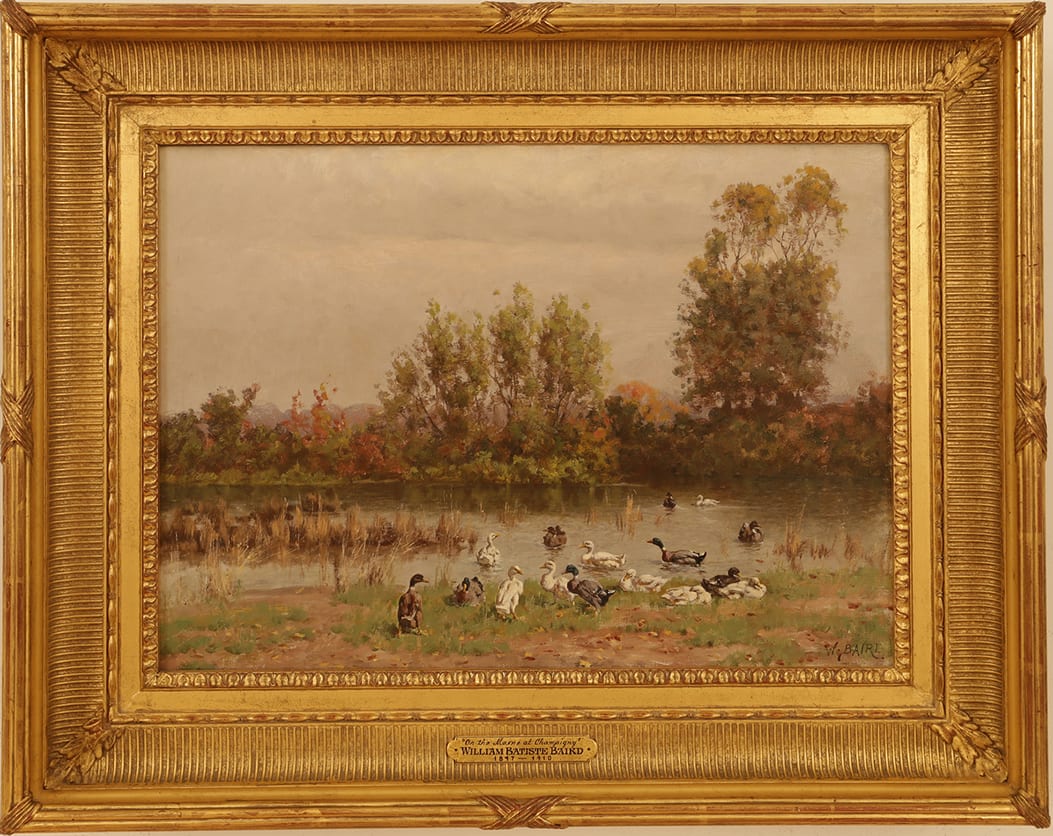The most honest art gallery in the world.
Art Blog Posts
Creating Your Legacy with Fine Art: A Gift That Outlives Time
"Life is short, but the art is long." — Hippocrates This ancient quote, often interpreted as a reminder of art's enduring power, resonates deeply in today’s fast-paced world. While our lives may pass in the blink of an eye, the art we create, collect, and curate has the potential to echo through generations....
The Great 19th Century Pennsylvania Artists Who Shaped American Art
Pennsylvania has long been a cornerstone of American art, and in the 19th century, it emerged as a powerful cultural hub where fine art flourished. Home to the Pennsylvania Academy of the Fine Arts—the oldest art museum and school in the United States—the state became a breeding ground for artistic innovation...
Thomas Corwin Lindsay (American 1838 – 1907)
Thomas Corwin Lindsay (American 1838 – 1907); also known as T.C. Lindsay. *"There is about Lindsay a sincerity and honesty that is to be found in his pictures, and never has he posed as anything that he is not. When the squabbles have arisen among the artists, he has never taken a part in them, but...
At Bedford Fine Art Gallery, We Sell Love
When you walk into Bedford Fine Art Gallery, you're not just entering a space filled with paintings—you’re stepping into a place where love for art comes to life. Here, we don’t sell art as an investment. We sell love. Because we believe that the right painting doesn’t just decorate your home—it touches...
George Gunther Hartwick (German-American, 1817-1899)
Known variously as G. Hartwick; George G. Hartwick; Gunther Hartwick; G. G. Hartwick in the literature of the late 19th – early 20th centuries American art auction records, Hartwick was from Saxony, Germany, but came to the New York City circa 1847. Although most art literature, that includes his name,...
Thomas J. Fenimore (1842 - 1873)
The career of this artist is steadily upward, and it is reasonable to expect that he is destined to occupy a position in the profession highly honorable. – Philadelphia Inquirer, 1867. Alas, Fenimore died just 6 years after this was written, at the age of 31. A young Fenimore had gotten his start in...
Things to Do in Bedford, PA: Explore the Best Attractions in Historic Bedford
If you're planning a visit to south-central Pennsylvania, you won't want to miss Bedford, PA—a charming, historic town nestled in the Allegheny Mountains. Whether you're here for a weekend getaway, a scenic road trip stop, or a history-filled vacation, there’s no shortage of things to do in Bedford,...
Edgar Spier Cameron (American 1862 – 1944)
Edgar Spier Cameron was an artist who spanned the 19th and 20th centuries and had a keen insight to the art of that time. Chicago art critic C. J. Bulliet, said of him in 1935: Cameron, despite his training under Cabanel and the other severe "academic" French masters, has not allowed either his talent...
Original Paintings for Sale Near Me: Discover Fine Art Online at Bedford Fine Art Gallery
When searching for original paintings for sale near me, you might think of visiting local art fairs or galleries. But today, finding the perfect piece of original art is easier — and closer — than ever. Thanks to the internet, Bedford Fine Art Gallery brings the gallery experience directly to your fingertips. Whether...
James Hamilton (American 1819 - 1878)
From the contrast of subjects, it is evident that the scope of this artist ranges from the most serenely imaginative to the wildest natural scenes. His style is bold and free; he does not aim at high finish; he is the reverse of literal and aims to give emphatically his own feeling and sense of a subject....
Bedford Fine Art Gallery: A Modern-Day Matchmaker for Art Lovers
In today’s fast-paced digital world, finding something truly meaningful can feel like searching for a needle in a haystack. But nestled in the heart of Pennsylvania, Bedford Fine Art Gallery has mastered the timeless art of connection—not between people, but between people and fine art. Like a modern-day...
Thomas Creswick (British 1811 - 1869)
His works, like himself, were pleasant and cheerful, ever taking the sunny view of nature...\[11] Creswick was born in Sheffield, England and as a youth, studied under English landscape painter J. V. Barber in nearby Birmingham. He was just 16 years old when he exhibited his first landscape at Birmingham...
Choosing a Fine Art Painting
Choosing a fine art painting that’s “right for you” is both a personal and practical decision. Here’s how to tell if a piece fits you: 🔍 1. Emotional Connection Does it move you? If you feel something—joy, nostalgia, awe, etc.—it means the painting is speaking to you. Can you see yourself living with...
James McDougal Hart (American1828 - 1901)
In 1879, historian and author G. W. Sheldon said of landscape painter James McDougal Hart: He spends his evenings with his family, and is less seldom seen in a public place than any other artist in New York. At his studio he can be found from early morning till early evening. His industry is something...
The Challenge of Restoring 19th Century Gesso & Gilded Frames
Why Finding Skilled Conservation Specialists Isn’t So Simple Restoring a 19th century gesso and wood frame—especially one adorned with delicate gold leaf gilding—is a meticulous, highly specialized art form. These ornate frames are not just decorative borders; they are historical artifacts in their...
Henry Collins Bispham (American 1841 – 1882)
Henry Collins Bispham (American 1841 – 1882) "On the Compagna," "To the Pront," "Noonday Rest," "Tigris," "Landscape and Cattle," "The Stampede," "Roman Bull," "Dead in the Desert," "The Wine Cart," "Hunted Down," "Crouching Lion," "The Raid," "Dexter," "Sheridan’s Ride," among others from the paintbrush...
Art for Sale: Discovering the Right Piece—and the Right Place to Find It
In today’s fast-paced world, art has become more than just decoration. It’s a statement and a way to bring life and personality into any space. The art market is vast and diverse, offering everything from contemporary abstracts to timeless landscapes, from global online auctions to intimate local galleries....
Paintings for Sale: Finding Quality Amid the Chaos
Paintings for Sale: Finding Quality Amid the Chaos In today’s digital age, searching for fine art online can often feel like sifting through a sea of mediocrity. With the explosion of online marketplaces and social media platforms, the internet is flooded with paintings for sale—many of which fall short...
Celebrating Contemporary Realism: The Remarkable Talent of Groves, Koeppel, Mosorjak, and Strueber at Bedford Fine Art Gallery
In an era where abstraction and conceptualism often dominate the contemporary art scene, a group of highly skilled artists stands out for their unwavering dedication to traditional realism. At the forefront of this movement are James C. Groves, Erik Koeppel, Michael Mosorjak, and Michael Strueber—four...
Trusting Your Instincts: Why Decorating Your Home Based on What You Love Can Be Better Than Following Professional Advice
When it comes to decorating your home, it’s tempting to lean heavily on professional advice. After all, interior decorators are trained experts — they know about balance, flow, symmetry, and color theory. But here's a powerful truth that often gets overlooked: no one knows what makes you feel at home...
Why Classical Natural Oil Paints Surpass Modern Synthetics: A Painter’s Perspective on Hue, Value, Chroma, and More
In the golden age of realism—from the late 18th to the early 20th century—painters like Bouguereau, Gérôme, and Sargent created masterpieces of lifelike clarity and glowing atmosphere. A central element in their technique was the paint itself: classical natural oil paint, made with hand-ground pigments...
Why Choosing an Oil Painting for Your Home Is a Personal Affair—Not an Investment Strategy
In a world that increasingly values metrics, returns, and future gains, it's easy to fall into the trap of viewing everything—especially art—through the lens of investment. But when it comes to selecting an oil painting for your home, the experience should be far removed from portfolio management. Instead,...
Dusseldorf Art Academy in 19th Century Germany
“It is somewhat strange that Dusseldorf, the capital of the inconsiderable Duchy of Berg, in the Rhenish provinces of Prussia -- a town of little note, dignified by no historical- associations, situated on the monotonous flats of the Rhine, far below the region of its grandeur and enchantment, with nothing...
Art for Sale: Why Buying Fine Art from a Small Gallery Makes the Most Sense
In the world of fine art, where beauty, provenance, and prestige often intertwine with money and marketing, where and how you buy your artwork matters immensely. While auction houses and large commercial galleries—especially those based in art capitals like New York—tend to dominate the conversation,...
Explore 1800s Landscape Paintings at Bedford Fine Art Gallery
The 19th century was a golden age for landscape art, capturing nature’s beauty with unmatched craftsmanship. If you’re a collector or art lover searching for authentic 1800s landscape paintings, look no further than Bedford Fine Art Gallery in Bedford, Pennsylvania. This renowned gallery specializes...
George Hetzel
George Hetzel Mr. George Hetzel, above all else, is the “exponent of nature”, as we find it in Western Pennsylvania. He exhibits at least four of the most delightful examples of streams, with rocky basins, as they actually exist almost at our very doors. In this particular field, he has practically...
Discover Bedford Fine Art Gallery: Your Premier Online Fine Art Gallery
Finding authentic fine art no longer means traveling to major cities or exclusive auction houses. Bedford Fine Art Gallery, a prestigious online fine art gallery based in Bedford, Pennsylvania, brings timeless 19th-century and Victorian artwork to collectors, decorators, and art enthusiasts across the...
Minerva Josephine Chapman (“Minnie”) Victorian Artist
Minerva Josephine Chapman (“Minnie”) was born in Altmar, New York, \[9]in 1858; however, the family moved to Chicago, Illinois in 1860. As a young woman, she returned east to attend school and graduated from Mount Holyoke College (Massachusetts) in 1878. When Chapman returned to Chicago that same year,...
Arthur Barnet Hoeber (American Artist, 1854 – 1915)
In Arthur Hoeber Nutley loses one of those men whose busy lives of accomplishment never left them without time for endearing themselves to with whom they lived and worked. Nutley will miss Arthur Hoeber, especially that part who knew him as a friend and neighbor. In a larger way the town will miss him...
Victorian Animal Paintings: A Timeless Celebration of Nature
The Victorian era (1837-1901) was a golden age for animal paintings, with artists capturing the beauty, loyalty, and power of the natural world. These artworks, deeply influenced by Romanticism and Realism, provided an intimate glimpse into the Victorian appreciation for both domesticated and wild animals....
Essie Leone Seavey Lucas (American Artist 1872 – 1932)
Essie Leone Seavey Lucas was considered one the foremost painters of race horses in the country \[3] during the early part of the 20th century. Born in Brownington, Vermont in 1872, she left for Boston at age 16 to study art with noted horse painter Scott Leighton at his Boston studio. Circa 1905, Lucas...
The Hudson River School: Capturing America's Beauty with Timeless Landscapes
The Hudson River School was America’s first true artistic movement, emerging in the mid-19th century and defining landscape painting for generations. Inspired by the untamed beauty of the American wilderness, artists of this school depicted breathtaking vistas, rolling hills, tranquil rivers, and majestic...
Romanticism vs. Realism: A Look at 19th-Century Art Movements
The 19th century was a transformative period in art history, marked by two dominant movements: Romanticism and Realism. While Romanticism emphasized emotion, drama, and imagination, Realism sought to portray the world with authenticity and truth. At Bedford Fine Art Gallery, we celebrate both styles,...
The Victorian Artists Society: A Legacy of 19th-Century Art
At Bedford Fine Art Gallery, we are passionate about preserving the legacy of 19th-century artists—painters whose masterful brushwork captured the world in its most luminous and dramatic moments. Among the many influential art movements of the era, the Victorian Artists Society holds a special place...
Interior Decorators and Fine Art: A Harmonious Blend for Home and Space Aesthetics
Interior decoration is a transformative art form that requires a balance of creativity, style, and functionality. A crucial element that elevates interior spaces is the integration of fine art. Interior decorators often collaborate with artists and curators to bring visual sophistication, emotional resonance,...
How to Hang Fine Art Gallery Style in Your Home
Creating a refined atmosphere in your home can be achieved through the thoughtful presentation of artwork. Hanging art gallery-style is a sophisticated way to display your collection while maintaining a cohesive, polished look. Whether you're showcasing family heirlooms, modern masterpieces, or a mix...
Samuel S. Carr (American 1837 - 1908) Victorian Artist
Not much is known of Carr’s early life and art training; however, it is likely that he received some formal training while in England, where he was born. Circa 1865, he immigrated to New York City and from 1870 to 1907, he lived with his sister and brother-in-law in Brooklyn. We can presume that Carr...
Etienne Adolphe Piot (French 1825 – 1910)
Piot is another one of those 19th century artists where a couple of details are uncertain. For example, in what year was he born -- in 1825, 1831, or 1850? I’ve seen all three of these birth years given. Also, is the artist Étienne Adolphe Piot the same as another artist named Adolphe Piot? David Karel...
Frank Bromley (American 1859 – 1890)
“Even picturesque foregrounds aided in forming compositions as lovely as any ever dreamed of by Turner. The old walled town of Conway, with its curious old houses and castle built by Edward I., which was one of the most magnificent of those ancient fortresses, grand even in its ivy-covered ruins, furnished...
Charles grant Beauregard (American 1856 – 1919)
Not much is written of Charles Grant Beauregard. It’s a shame, really. He was a quite good artist. If one would have to assign him to a particular “school” of landscape painting, I suppose that it would be the Hudson River School. Perhaps, in the manner of George Inness (American, 1825 – 1874)? But I...
The Classic Academic Training of 19th-Century Artists
In the 19th century, the academic training that artists underwent was rooted in centuries of tradition. This system, formalized in Europe and particularly in France, was designed to mold aspiring artists into skilled professionals capable of producing works that adhered to the highest standards of technique,...
Why You Get the Best Customer Service from a Husband-and-Wife-Owned Small Business (like Bedford Fine Art Gallery’s Joan and Jerry Hawk)
When it comes to customer service, there’s a noticeable difference between the experience offered by a small, family-owned business and the customer support provided by larger businesses. In particular, husband-and-wife-owned small businesses stand out for their personalized approach, dedication to quality,...
Why Buying Fine Art is Not an Investment: It's All About Love
When considering the world of fine art, many potential buyers find themselves caught in the dichotomy of investment versus passion. The allure of art often comes with the notion of financial appreciation, leading some to view it primarily as an investment vehicle. At Bedford Fine Art Gallery, however,...
A Comparison of 19th Century Artists and Contemporary Artists
The world of art has undergone significant transformations from the 19th century to the present day. Artists of the 19th century operated within a context vastly different from that of contemporary artists, influenced by social, political, and technological changes. This article explores the key differences...
The Artistry of 19th Century Frames: More Than Just a Border
When we think of art, our minds often drift to paintings, sculptures, and other forms of creative expression. However, the frames that encase these artworks deserve recognition in their own right. An original 19th-century frame is not merely a vessel; it is a significant piece of art history, reflecting...
The Allure of 19th Century Original Fine Art: Why It Outshines Prints and Giclées
The debate between original works and reproductions such as prints and giclées often ignites passionate discussions in art collecting. While prints and giclées have their merits, especially regarding accessibility and affordability, original fine art from the 19th century holds a unique appeal that transcends...
The Science Behind Why Looking at Fine Art Makes You Happy
Art uniquely evokes emotions, stirs our imagination, and connects us to experiences beyond our own. For centuries, people have been captivated by the visual beauty of fine art, often reporting feelings of joy, calm, or inspiration when viewing a masterpiece. But what exactly is happening in our brains...
Why a Gallery is the Best Place to Buy Fine Art
Why a Gallery is the Best Place to Buy Fine Art When it comes to purchasing fine art, the options can seem endless. Each avenue offers advantages, from online platforms to art fairs and auctions. However, galleries stand out as the premier choice for acquiring fine art. Here's why a gallery is the best...
Olive Parker Black (1862 -- 1948)
We, at Bedford Fine Art Gallery, believe that Olive Parker Black is one of the best American women plein air painters of the 19th century. She was born in Cambridge, Massachusetts in 1862. Her earliest study was with genre painter Otto Grundmann and landscape painter Frank Crowninshield at the School...
George Nelson Cass (American c. 1825 - 1882)
Boston artist, George Cass was born in Canaan, New Hampshire and later set up his studio in Boston. He painted in the nearby rural towns of Hingham and Medfield, really never straying too far from these environs; although he also painted scenes of the Hudson River valley, the Connecticut River, the Tom...
James N. Hess American (1858 - 1890)
"To lovers of the beautiful in art the handsomely appointed studio of Mr. J. N. Hess presents many attractions as upon its walls are to be found many pictures that bear the stamp of originality of conception and marked artistic ability."(Pennsylvania Historical Review). Hess, also known as James N....
August Laux (American, 1847 – 1921)
Laux was born in Rhine Pfalz, Bavaria, in 1847 to French parents. An uncle and a cousin were sculptors in Paris and Laux began his art training in the Paris studio of his uncle, having been encouraged to work in clay. In 1863, the family immigrated to the New York City and the young Laux continued with...
How to Buy Fine Art
The Best Way to Buy Fine Art: A Guide for Collectors Purchasing fine art is more than just a financial transaction—it's an emotional and intellectual investment that reflects taste, personality, and sometimes even historical significance. If you're a seasoned collector or a first-time buyer, purchasing...
Edward Moran (American 1829-1901)
Moran was born at Bolton-le Moor, Lancashire, August 19, 1829, the oldest child of a large family. As a child he was put to work at the loom, following in the footsteps of his father and his ancestors who were hand-loom weavers. When Moran was nine, a decorator in Bolton recognized talent in young Moran...
Paintings from 1800s
Exploring 19th-Century Masterpieces: Paintings from the 1800s Available at Bedford Fine Art Gallery The 19th century was a time of profound artistic expression, marked by movements that pushed the boundaries of creativity and craftsmanship. For art enthusiasts and collectors alike, owning a piece of...
Featured Artist - Max Weyl
Max Weyl (American 1837 – 1914) "All through the autumn, day after day, from early morning until dusk, Max Weyl, lover of nature and true artist that he is, could be found at work in the vicinity of Piney Branch. Indefatigably and earnestly he worked until the days grew too cold and the landscape desolate;...
Victorian Landscape Paintings for Sale
Victorian Landscape Paintings for Sale at Bedford Fine Art Gallery: Timeless Beauty from the Most Honest Art Gallery in the World Nestled in the picturesque town of Bedford, Pennsylvania, Bedford Fine Art Gallery stands as a beacon of integrity and authenticity in the art world. Revered as the most...
Reuben LeGrande Johnston
Reuben Legrande Johnston (American 1850 – 1918) "Mr. Johnston paints with much freedom and facility, with that chic which renders a picture crisp and sparkling. In his studio are several studies of sheep, a charming study of the first snow of winter, made near this city, and a recent study of the recent...
19th Century American Art at Bedford Fine Art Gallery
Exploring 19th-Century American Art at Bedford Fine Art Gallery in Bedford, Pennsylvania The Rich Tapestry of 19th-Century American Art The 19th century was a transformative period for American art, marked by a burgeoning sense of national identity and a growing appreciation for the country's natural...
Frederick Stone Batcheller (American 1837 – 1889)
Batcheller was born in the fledgling industrial city of Providence, Rhode Island. He started as a marble cutter in Providence with Tingley and Brothers, and did produce a few marble busts, before turning to oil painting. Today he is known best for his beautifully detailed still-life paintings. As Providence...
Frank A. Barney (American, 1862 – 1954)
"Nature has been his exacting and uncompromising teacher, defying him to meet her challenges, but his love or her has been abiding. She has lured him from beaten paths to the depths of the forest. She has beckoned him to the waterfall. She has taken him to the shaded brookside. She has set him down at...
Hermann Ottomar Herzog
Hermann Ottomar Herzog (German-American 1832 - 1932) "He came among us as a successful painter of the most picturesque scenery of Europe—Norwegian fiords, the coasts of the Baltic and North Sea, the wild peaks and peaceful valleys of the Hartz, the glacial passes of the Alps, yet recognized fields of...
Fine Art for Sale at Bedford Fine Art Gallery: The Most Honest Gallery in the World
Nestled in the charming town of Bedford, PA, the Bedford Fine Art Gallery stands as a beacon of integrity and passion for fine art. Renowned as the most honest art gallery in the world, it has earned its reputation through a steadfast commitment to transparency, authenticity, and personalized service....
Omni Bedford Springs Resort
Nestled in the picturesque landscape of the Allegheny Mountains, the Omni Bedford Springs Resort is a timeless retreat that seamlessly blends historical charm with modern luxury. This iconic resort has been a sanctuary for travelers since its inception, attracting visitors with its natural mineral springs,...
Charles Lasar (Charles Augustus "Shorty" Lasar - American-French 1856 – 1936)
Described as an "English-speaking Frenchman," known to the studios of Paris, London, and New York as "Shorty" by the New York Times (February, 12, 1910), Lasar was born in the steel-making city of Johnstown, Pennsylvania, but making steel was not to be in his future. Making art was. As a young man, he...
19th Century Paintings for Sale at Bedford Fine Art Gallery
The 19th century was a period of significant transformation in the art world. This era witnessed the rise of numerous movements, from Romanticism and Realism to Impressionism and Post-Impressionism, each contributing to the rich tapestry of art history. For collectors and art enthusiasts, acquiring a...
Victorian Era Paintings
Victorian Era Paintings at Bedford Fine Art Gallery, Bedford, PA Nestled in the scenic town of Bedford, Pennsylvania, the Bedford Fine Art Gallery presents a remarkable collection of Victorian-era paintings, offering a splendid view into 19th-century art. The gallery's selection features a range of...
Art Galleries Near Me
Whatever city people live in, they ask about “art galleries near me”, when they do a search on the internet. The term, art galleries near me, is relative. When Joan and I went to college, there was only one computer and it used key-punch cards for Fortran! Back then folks could only find out about...
What Are Victorian Paintings?
Victorian paintings were created by artists during the Victorian timeframe of 1837 to 1901. Victorian paintings encompass movements such as Neoclassicism, Romanticism, Realism, and Impressionism. Bedford Fine Art Gallery has about 80% Victorian paintings for sale and roughly 20% contemporary paintings...
Fine Art Gallery in Bedford, PA
The standard definition of a fine art gallery is a room or building in which visual art is displayed. A lot of times people use the terms fine art gallery and art museum interchangeably. Sometimes this is appropriate, but here in Bedford, Pennsylvania, we have the Southern Alleghenies Museum of Art...
Original Paintings For Sale
There are a lot of places that state that they have original paintings for sale. Unfortunately, there are times when these places mislead the public. For example, sometimes they are selling a giclee. The term, giclee, is a derivation of a French word. These so-called “paintings for sale” are simply...
19TH CENTURY FINE ART LEGACY
The land upon which the Barclay house is built was part of a larger land grant given to Colonel Hugh Barclay by William Penn. Hugh Barclay, who served during the Revolutionary War, was Bedford’s first Post Master and patriarch of the Barclay family. The Barclay family rose to prominence in Bedford in...
THE PERFECT 19TH CENTURY PAINTINGS FOR YOUR HOME
Rare. Beautiful. Enchanting. Create a nexus within your home--stunning 19th-century artwork that can complement the color, pattern, texture and design of your home for the next level of self-expression. Modern and vintage homes will capture a bit of the wonderful nostalgia of the past by incorporating...
GEOLOGY AND LANDSCAPE ART IN 19TH CENTURY AMERICA
America was perceived as a somewhat cultural wasteland in the 18th and 19th centuries; however, a number of expeditions that began with Lewis and Clark (1804) pierced the interior of the vast "New World" changed all that. These forays revealed awe-inspiring geological phenomena, such as the course of...
FEATURED ARTIST - HARRY HERMAN ROSELAND
Harry Roseland (American, ca. 1866 – 1950) I never promised you a rose garden! These words were uttered by 19th Century Brooklyn, NY painter Harry Roseland when a patron, who had commissioned a painting from him, was apparently disappointed that the finished landscape was devoid of flowers. The painting...
LOCATION. LOCATION. LOCATION.
For approximately 250 years, Bedford has been a welcome stopping place for travelers. Presidents and soldiers, Indian traders and the first colonists of the west, all paused here. Today, thousands of tourists enjoy its health-giving climate, its many points of great scenic beauty; pause at the shrines...
FEATURED ARTIST - BARTON STONE HAYS
Barton Stone Hays (American 1826 – 1914) Barton Stone Hays was born in Greenville, Ohio in 1826. Known as B. S. Hays, he was a self-taught artist, who after moving to the northern part of Indiana -- the villages of Wingate, Covington, and Attica, made a successful career as a portraitist -- painting...
DESTINATION
The Bedford Fine Art Gallery is "The Destination" not just an attraction along the way. The artworks presented in the Gallery are period originals, not copies, prints or other modes of imitation that exemplify the skill of the original artist, not that of the machine, which is a mere mechanical copyist....
FEATURED ARTISTS: JAMES REID LAMBDIN AND GEORGE COCHRAN LAMBDIN
James Reid Lambdin was born May 10, 1807 in Pittsburgh, Pennsylvania to James Lambdin, a carpenter from Kent County, Maryland and Prudence Harrison, a relative of William Henry Harrison (ninth President of the United States). At 15, Lambdin embarked on his art career, traveling to Philadelphia where...
WHAT’S ON YOUR WALL?
A number of questions are asked in this article. It started with the title, "what’s on your wall". It is not just a hokey takeoff of a popular credit card commercial, but a serious question. Your house is probably the biggest single purchase you will ever make. Once it is purchased it is no longer simply...
FEATURED ARTIST - JOHN ROSS KEY
Key was born in Hagerstown, Maryland in 1832 to Philip Barton Key, U.S. Attorney for the District of Columbia, and Ellen Swan Key. In 1859, when he was 21 years old, his father was killed in cold blood by Daniel Sickles, then a U.S. House of Representatives from the State of New York and later a Union...
19TH CENTURY FRAMES - THE PERFECT COMPLIMENT
A picture is worth a thousand words, so the saying goes. What about the frame? Why do we surround our paintings with frames? Simply put, to provide a silent, but very present, accolade to the painting. What better compliment than to surround it with a stunning, but not overpowering accessory. The important...
AN INTRODUCTION TO ART MOVEMENTS OF THE 19TH CENTURY
The art of painting is very old and dates to the earliest civilizations. Although each civilization developed its own art, art as we know it today has as its inception with the fifteenth-century Italian Renaissance artists. The evolution of art to the various aesthetics that developed throughout the...
HOW TO CONSERVE, RESTORE, AND MAINTAIN 19TH CENTURY PAINTINGS
The first thing to remember is DO NOT TRY TO MAKE EVEN THE SMALLEST REPAIRS OR FIXES ON YOUR OWN! I see that I've gotten your attention. I cannot emphasize this enough—making repairs on your own will likely result in greater damage, perhaps even irreparable damage. This article provides you with some...
FEATURED ARTIST – ALBERT FRANCIS KING (AMERICAN 1854 – 1945)
King was born in Pittsburgh, Pennsylvania and was recognized as Pittsburgh's primary still-life painter during the 19th century. His still-life compositions included, fruit (especially watermelons), vegetables and fish depicting meal preparation, similar to those by Jean-Bapiste-Simeon Chardin, the great...
FEATURED ARTIST – JOHN HENTRY DOLPH (AMERICAN 1835 – 1903)
He was born in Fort Ann, New York; but, his father moved the family to Ashtabula County, Ohio, after the death of his mother in 1841. As a youth, he generated income by doing decorative painting on coaches and carriages. He eventually made his way to Cleveland where he studied with Allen Smith, a prominent...
HOW OWNING 19TH CENTURY PAINTINGS CAN MAKE YOU HAPPY
It just does. Well yes, but there is a bit more to it than that. You are in charge of your own happiness and if you have art on your walls it's there for a reason. You liked it, you bought, and you were happy that you did. Your "collection" may consist of a single piece or many. It may be a mix of the...
ART TERMS YOU SHOULD KNOW, PART 1
When visiting a museum or a retail art gallery, it pays to know the terms that describe what you see and why, perhaps, why you like and don’t like a particular painting. I have summarized and condensed, where appropriate, some important terms here, from Art Terms & Techniques (Mayer, 1991). Fine art. Art...
GEORGE HETZEL AND THE 19TH CENTURY SCALP LEVEL SCHOOL
What drew Pittsburgh artist, George Hetzel (1826 – 1899) to Scalp Level, a small village at the confluence of the Little Paint Creek with Paint Creek in 1866? The artist accepted an invitation from fellow Pittsburgh artist Charles Linford and Pittsburgh lawyer John Hampton to do some mountain fishing...
COLOR AND HUE
There is more to the term "color" than meets the eye. This article will serve as a brief introduction to the topic of paint color. You really need only three colors—red, yellow and blue, known as the "primary" colors to create any hue. Just mix any two primary colors together, in equal amounts, and...
VICTORIAN HOMES AND FINE ART
Each person is unique and stands apart from others; there will never be another "you"…at least for a long, long time. For the time being, you are one of a kind. Everything from the coffee you drink, the shoes you wear, the colors you wear, to the car you drive, communicates something about you, however...
BEDFORD FINE ART GALLERY’S ARCHITECTURAL VENUE
The Barclay Mansion was built in 1889, during the late Victorian period. Although the house is Victorian in age, it is reminiscent of the Renaissance Classical tradition with Italianate style details. The low central tower, with its curved and stilted segmented arch work above the triple and double window,...
LONG ON COLOR
In 1871, Samuel P. Long penned "Essay VII, Color" in his book Art: Its Laws and the Reason for Them, Collected, Considered, and Arranged for General and Educational Purposes. Granted, it is a very long title, but an important book on art for the general public that time. Interestingly, Mr. Long, who...
THOSE SMART VICTORIANS
I read an absolutely fascinating article on the "Victorians"--those people whom everybody thinks they know, but really don’t. First, a short discussion on The Victorian Era. It is associated with the reign of Britain’s Queen Victorian in (reign: from 1837 to 1901). Realistically, it seems more appropriate...
A PLACE TO PAINT
Nineteenth century artists typically had to rent quarters which were often usually very spare of furnishing and amenities, such as heat, for example. And since many lacked an excess of funds with which to pay for rent and food, let alone brushes, canvases and paints—a requirement of their accommodations...
THE LANDSCAPE THROUGH A GEOLOGIST’S EYE
Art is a personal experience. You love what you love. I love representational art and I absolutely love landscapes. Why? Perhaps, because as a geologist, I spent most of my career tagging along behind a drill rig over "unimproved" areas of Pennsylvania and adjacent states. Often, when I went home at...
ART TERMS YOU SHOULD KNOW, PART 2
When visiting a museum or a retail art gallery, it pays to know the terms that describe what you see. I have summarized and condensed, where appropriate, some important terms here, from Art Terms & Techniques (Mayer, 1991). Support. The structure on which the ground (see below) or paint layer is laid....
"BLUE CHIP" VERSUS "CHOCOLATE CHIP"
"Blue chip" stocks are those of well-known industry leaders, which typically sell at a high price and have a record of steady earnings. "Blue chip" in the art world has a similar meaning. Typically considered "investment-grade art" it includes historical art and art of the highest aesthetic quality—those...
DIRTY ART AND THE UNVARNISHED TRUTH
Let us ask you some questions, do you prefer: abstract expressionism, representationalism, impressionism, realism, Hudson River School, Scalp Level School, "truth to nature" or other styles? landscapes, still-lifes, genre, animal, sporting art, portraits, historical art? light, bright colors, or dark,...
ART: ITS LAWS, AND THE REASONS FOR THEM
In addition to being an integral part of the fine art market for over 30 years, we also have acquired an impressive library of hundreds of books on art. The purpose of this article, and future articles, is to share with you some of the insight we learned from many art experts from the 19th century. This...
A MANUEL OF OIL PAINTING
This article contains excerpts from the Honorable John Collier’s 1889 book titled "A Manuel of Oil Painting." 1889 is the same year our home (where we have Bedford Fine Art Gallery) was built! The book spends a great deal of time covering the "practice" of oil painting; however, Collier also dives into...
TREES
Joan and I believe you truly know "good art" when you see it. You intuitively know, for example, if a tree looks realistic in a landscape painting. Your instincts, of what makes a tree look "real" in a painting, partially comes from your years of observing the natural beauty of your surroundings. Every...
COLOR IN ART
As we pointed out in past articles, we are fortunate to have gained insight from some very knowledgeable 19th century artists, through great books they wrote. It is fantastic to learn what these artists educate us on, in their own words. In his 1923 book, titled "The Enjoyment and Use of Color", Walter...
COMPOSITION
We have talked before about how 19th century artists handled creating the composition for their paintings. One such artist was Charles Augustus (Shorty) Lasar. In his 1917 book "Practical Hints for Art Students", he gives valuable lessons for his approach regarding composition. This article gives a similar...
CLEANING PAINTINGS – REMOVAL OF OLD VARNISH
In past articles, Joan pointed out that cleaning paintings is something that is NOT DO IT YOURSELF. Removing the old varnish on a painting, that is over 100 years old, may sound simple, but it should be performed by an expert. In Ralph Mayer’s 1940 book titled "The Artist’s Handbook of Materials and...
VALUES – LIGHT AND SHADE IN GREAT PAINTINGS
We believe you can tell a great painting when you see it. There are certain qualities that are universal in both the 19th century and contemporary paintings available at Bedford Fine Art Gallery. We strive to get the best-of-the-best in all acquisitions. One of the qualities of these great works of art...
LISA GEIGER - THE ART OF THE IMPRESSIONISTIC LANDSCAPE
To execute an impressionist landscape, it is important, at least to me, to have been there in person to witness the scene to see how the light impacted each part of the landscape and to get an overall feel for the composition. That is why I prefer to work from my own experience and photos. It is crucial...
GLAZING AND SCUMBLING
Our previous article about dead-coloring was from the 1938 book titled "Painting in Oils" by Bertram Nicholls. This article picks up where the last article ended and Nicholls talks about the process of glazing and scumbling. Nicholls states: "The dead-coloring being thoroughly dry, a warm transparent...
THE LAY-IN OR DEAD COLOURING
The time-honored traditional way of oil painting is all but lost, except for a few modern-day artists that still adhere to the old master’s process. A very important part of the old-school process is the laying-in of dead colors. In his 1938 book, titled "Painting in Oils", author Bertram Nicholls describes...
ANOTHER POINT-OF-VIEW ON COMPOSITION
Another really great book, dated 1903, was written by Daniel Burleigh Parkhurst and is titled "The Painter in Oil" (A Complete Treatise on The Principles and Technique necessary to The Painting of Pictures in Oil Colors). When talking about composition, Parkhurst begins with: "Importance – Composition...
MARINE EFFECT
Bedford Fine Art Gallery has great examples of seascape paintings that are well executed by very talented artists. People often marvel at how the artist created such realistic works. In his 1924 book titled "The Teacher of Landscape Painting", artist D.M. Campana provides insight into classical methods...
SELECTION IN A LANDSCAPE PAINTING
Did you ever wonder what draws you to a particular landscape painting? For over 30 years, we have evaluated what we think makes up a good painting. In past articles, we talk about color, composition, technique, etc. This article covers thoughts on the artists selecting a subject for a landscape painting. "The...
CURATOR’S STATEMENT ON ARTIST MICHAEL M. STRUEBER
Joan and I volunteer and support the Southern Alleghenies Museum of Art (which began its service to our communities in 1976). A past curator of the museum had some keen observations regarding the art of Michael M. Strueber. We are fortunate to offer some of Michael M. Strueber’s work and below is what...
MIXING
“In mixing colors you should be careful not to over mix. Don’t stir your paint. Too much mixing takes the life out of the color. Particles of the pure color not too much broken up by mixing are valuable to your work, giving vibration and brilliancy to it. The reverse is muddiness, which is sure to come...

Art Lovers' Niche - Jul 18, 2025
Discover the Charm of Bedford, Pennsylvania: A Perfect Vacation Getaway
Art Lovers' Niche - May 14, 2025
We are closing in on 100 articles that Joan and I put together as new Art Blog Posts on the website. There are many great articles on featured artists, 19th century fine art, regional artists, fine art methods, best practices, etc.
Art Lovers' Niche - Feb 17, 2025
Born in Germany, Weyl immigrated to Williamsport, Pennsylvania in 1853 and in 1861 moved to Washington, D.C., where he opened a jewelry store. Not trained as an artist, Weyl started painting flowers and still-lifes as a hobby.
Art Lovers' Niche - Jan 14, 2025
What is the difference between Bedford Fine Art Gallery and other places to purchase art?
Art Lovers' Niche - Jan 6, 2025
Women artists in 19th-century America were relatively rare. The rarity can be explained through a combination of social, cultural, and economic factors...
Art Lovers' Niche - Dec 30, 2024
This short clip is from the 1946 film noir titled Crack-Up. Per Wikipedia: "Crack-Up is a 1946 American film noir starring Pat O'Brien, Claire Trevor, and Herbert Marshall.
Art Lovers' Niche - Dec 16, 2024
Since opening our 2nd gallery, The Annex, about a block and a half from Bedford Fine Art Gallery, we continue to find exciting fine art for you to fall in love with.
Art Lovers' Niche - Nov 26, 2024
Nestled in the picturesque Allegheny Mountains of Pennsylvania about a mile and a half from Bedford Fine Art Gallery is the Bedford Springs Resort.
Art Lovers' Niche - Oct 9, 2024
Art uniquely evokes emotions, stirs our imagination, and connects us to experiences beyond our own.
Art Lovers' Niche - Aug 30, 2024
Hamilton was born near Belfast, Ireland; however, in 1832, the family came to the United States and settled in Philadelphia, Pennsylvania.
Art Lovers' Niche - Jul 8, 2024
Trompe-l'oeil (French for "fool the eye") is a type of art that creates a very realistic optical illusion of three-dimensional space and objects on a two-dimensional surface.
Art Lovers' Niche - Jun 25, 2024
Herzog was a prolific painter. He painted quickly and accurately, infusing his landscapes with luminous light.
Art Lovers' Niche - May 14, 2024
Can we help? Please call us anytime to help you find the perfect painting that<br>you and your family will love now and for many years to come.
Art Lovers' Niche - Apr 19, 2024
Every picture shows a spot with which the artist has fallen in love.
Art Lovers' Niche - Mar 26, 2024
Max Weyl was a Washington, D.C. artist and he founded the Washington Landscape School. Many prominent Washington, D.C. patrons purchased his art. Francis Cleveland (wife of U.S. President Grover Cleveland) and Ellen Wilson (wife of U.S. President Woodrow Wilson) bought Weyl's landscapes for the Whitehouse.
Art Lovers' Niche - Mar 7, 2024
"The greatness of art is not to find what is common but what is unique."
Art Lovers' Niche - Jan 13, 2024
The New York Times recently interviewed Joan regarding an article on a painting from 19th century French academic artist, Toulmouche.
Art Lovers' Niche - Dec 29, 2023
Wishing you a Happy New Year filled with prosperity, joy, exciting opportunities, and the achievement of your aspirations.
Art Lovers' Niche - Dec 11, 2023
Jacob Christoph Le Bion, a Frankfurt printmaker, first noted the three primary colors, red, yellow, and blue. It was, however, Moses Harris who in 1766 took Le Bion’s three primary colors and arranged them in the shape of a wheel. Even today, color theory is usually taught in the form of an aesthetically pleasing color wheel.
Art Lovers' Niche - Nov 20, 2023
Did you know? - Art competitions used to be part of the Olympics. Between 1912 and 1948, medals were awarded for painting, sculpture, architecture, music, and literature.
Art Lovers' Niche - Nov 6, 2023
My first visit to the Bedford Fine Arts Gallery was a pleasure. The Gallery’s setting is a charming historic home which in itself is worth the visit, but it is easy to lose your sense of time as you move through the spaces and are surrounded by an impressive quantity and variety of beautifully preserved artwork.
Art Lovers' Niche - Oct 16, 2023
Treat a work of art like a prince: let it speak to you first.
Art Lovers' Niche - Aug 28, 2023
New painting from Claggett D. Spangler (American 1848 - 1911) - Fishing on the Upper Potomac
Art Lovers' Niche - Jul 13, 2023
The total value of transactions in the art market worldwide amounted to $67,800,000,000 in 2022 (this is the second highest value reported in the last fifteen years).
Art Lovers' Niche - Jun 30, 2023
"You use a glass mirror to see your face, you use works of art to see your soul."
Art Lovers' Niche - Jun 1, 2023
Ok, so we are not Carnac the Magnificent and probably missed your birthday by a little or a lot, but the point is you probably have lots to CELEBRATE! We have seen many customers who have "fresh start" moments, such as celebrating:
Art Lovers' Niche - May 22, 2023
Falling in love with that perfect painting stimulates all of the happy chemicals in your brain, like Dopamine, Oxytocin, and Serotonin.
Art Lovers' Niche - Apr 4, 2023
We were so happy with Joan and Jerry's customer service and expertise. I would recommend Bedford Fine Art Gallery to anyone that is looking for the special piece of art.
Art Lovers' Niche - Mar 3, 2023
As we always say, our customers within the Art Lovers' Niche community are the best. We have been working hard, behind the scenes, and are happy to report that we are opening-up a new gallery about 2 blocks from our current gallery, to better serve you.
Art Lovers' Niche - Jan 16, 2023
What would they say, if animals could talk? Great paintings stir emotions from deep within us. Buy paintings that make you happy! It's a quality-of-life issue.
Art Lovers' Niche - Dec 20, 2022
We probably all know of an ultra-exclusive country club that provides top-tier services exceeding all others in the world. Our customers are the best. We really did not think about the gallery in the context of being like such an exclusive club.
Art Lovers' Niche - Dec 1, 2022
You have worked hard and want to treat yourself, as your reward for all your efforts. Your home is probably your biggest investment and you dream of surrounding yourself in beauty and luxury in every special room that you, family, and friends frequent.
Art Lovers' Niche - Nov 7, 2022
Grand View Research published a report on Home Decor Market Size, Share, & Trends Analysis. They state that the global home decor market size was valued at 663.1 billion dollars in 2018.
Art Lovers' Niche - Oct 13, 2022
We respect the like-minded "Art Lovers' Niche" group that shares our passion for fine art. Whether it is exploring our website or making that special trip to visit Bedford Fine Art Gallery, you are the best!
Art Lovers' Niche - Oct 1, 2022
We love 19th century fine art, but quality exists regardless of who did the painting or in what century it was painted.
Art Lovers' Niche - Sep 8, 2022
We would like to thank the thousands of fellow art-lovers who explore our website, join us for email updates via Art Lovers’ Niche, follow us on Instagram, and stop to see us at the gallery.
Art Lovers' Niche - Aug 22, 2022
The time to be happy is now. Treat yourself to a beautiful work of art that pleases now and for many years to come.
Art Lovers' Niche - Jun 20, 2022
You have heard it before, but a picture really is worth a thousand words. Fine art is powerful. There are thousands of words that can be used to express how you feel about fine art you fall in love with.
Art Lovers' Niche - May 31, 2022
"All real works of art look as though they were done in joy."
Art Lovers' Niche - Apr 21, 2022
"Treat a work of art like a prince: let it speak to you first."
Art Lovers' Niche - Mar 15, 2022
The power of art is amazing. If you are a person who enjoys fine art, then buying paintings for your home or office makes you happier.
Art Lovers' Niche - Mar 2, 2022
William-Adolphe Bouguereau stated: "For me a work of art must be an elevated interpretation of nature" and "One shouldn't believe in all those so-called innovations.
Art Lovers' Niche - Feb 8, 2022
The below short video gives an overview of a fun talk, given by Dr. Terri Nicole Sawyer recently at Bedford Fine Art Gallery. Using the skills of Dialectical Behavioral Therapy, Dr. Sawyer guided some local art-lovers through the emotional mind, the reasonable mind, and the wise mind as you view art.
Art Lovers' Niche - Feb 2, 2022
We are sure you will agree that we can’t be the ones to convince yourself now is the time to purchase fine art from Bedford Fine Art Gallery. Only you can find yourself doing so because it naturally and easily makes sense and feels right for you.
Art Lovers' Niche - Jan 3, 2022
Before you purchase the painting of your dreams from Bedford Fine Art Gallery, we just want to say that you might be surprised at how naturally and easily you can see a great decision being made. We think that's part of the process when you recognize it's fun and safe to move ahead.
Art Lovers' Niche - Dec 6, 2021
We have recently expanded the gallery experience with 4 new spaces. The gallery showcases over 200 pieces of fine art.
Art Lovers' Niche - Oct 15, 2021
Here is a sneak-peek of upcoming new paintings that will be posted on the website. These are not yet posted on the website and are for your eyes only!
Art Lovers' Niche - Sep 7, 2021
In his 1924 book titled "The Enjoyment and Use of Color", author Walter Sargent examines a "scientifically arranged palette."
Art Lovers' Niche - Aug 9, 2021
In his 1871 book titled "Art it’s laws and reason for them", author Samuel P. Long states: "Now there can be no doubt whatever that the pleasure with which one contemplates any object esteemed beautiful is enhanced by the association awakened in the mind of the beholder...
Art Lovers' Niche - Jul 16, 2021
One of the many testimonials on our website from satisfied customers...
Art Lovers' Niche - Jun 29, 2021
Every picture shows a spot with which the artist has fallen in love.
Art Lovers' Niche - May 24, 2021
Art viewing can stir emotion. Sometimes those emotions come from deep inside and sometimes they come from unrecognizable places that we have pushed away.
Art Lovers' Niche - Feb 22, 2021
We have pointed this out previously, but feel it is worth repeating. The dirty little secret is that all auction houses and almost all galleries do not get their paintings professionally conserved or restored prior to selling them.
Art Lovers' Niche - Feb 1, 2021
Smaller Gems - The perfect complement for your beautiful home.
Art Lovers' Niche - Dec 30, 2020
This year we clearly saw how important it is to build strong relationships through serving many customers as their guide to finding fine art they love.
Art Lovers' Niche - Dec 7, 2020
There are many personal reasons for why you fall in love with a particular painting. It is a subjective process and only you know what pleases you the most...
Art Lovers' Niche - Oct 30, 2020
Art is the most intense mode of individualism that the world has known.
Art Lovers' Niche - Sep 28, 2020
Charles Ethan Porter is being rediscovered today as a major 19th century painter.
Art Lovers' Niche - Sep 14, 2020
We recently sold paintings by Roseland, Turney, Zuckerman, Lasar, Hubacek, Lambdin, Boss, Parker, Linford, and Leavitt.
Art Lovers' Niche - Aug 31, 2020
In the 1860’s, fellow Pittsburgh artist Charles Linford and prominent Pittsburgh attorney John Hampton took George Hetzel on a fishing trip to the mountainous streams of Scalp Level, Pennsylvania.
Art Lovers' Niche - Aug 17, 2020
We sold quite a few paintings recently, so as usual, we have also added some new paintings for your consideration.
Art Lovers' Niche - Jun 29, 2020
The dirty little secret is that all auction houses and almost all galleries do not get their paintings professionally conserved or restored prior to selling them.
Art Lovers' Niche - Jun 15, 2020
Albert Francis King was born in Pittsburgh, Pennsylvania and was recognized as Pittsburgh's primary still-life painter during the 19th century.
Art Lovers' Niche - May 27, 2020
Once you fall in love with a painting, you can now view the painting on YOUR wall, with the all new custom virtual reality tool on our website.
Art Lovers' Niche - May 12, 2020
There are many personal reasons people collect fine art. It can be as simple as enjoying the beauty of a unique painting, as it becomes the focal point within your special room.
Art Lovers' Niche - May 1, 2020
Mid 19th century artists, for the first time, could now take their oil paints with them in tin tubes to paint the unique beauty and power of nature.
Art Lovers' Niche - Apr 24, 2020
When you buy a 19th century painting, you are preserving a small piece of history – that can make you happy.
Art Lovers' Niche - Apr 14, 2020
You’ve dedicated yourself to achieving your goals and worked hard throughout your career. You recognize and deserve the very best. Viewing fine art in your home or office, decreases stress levels, increases empathy, raises critical thinking skills, and helps provide relief from mental exhaustion.
Art Lovers' Niche - Apr 8, 2020
As we all work together right now, we recognize our strong love of family, passion for our hobbies, and the need to persevere in achieving our dreams. "Art Lovers' Niche" serves as your personal concierge to assist you in your journey.


















